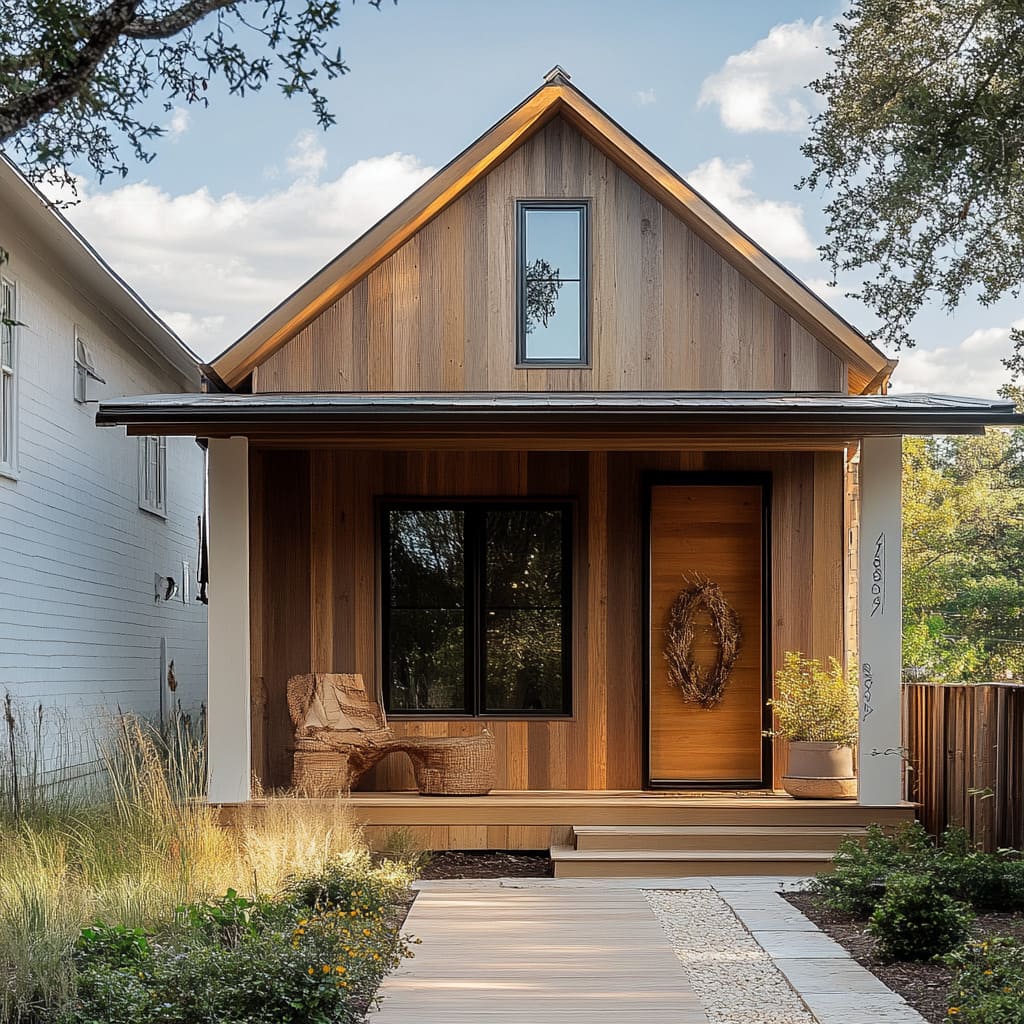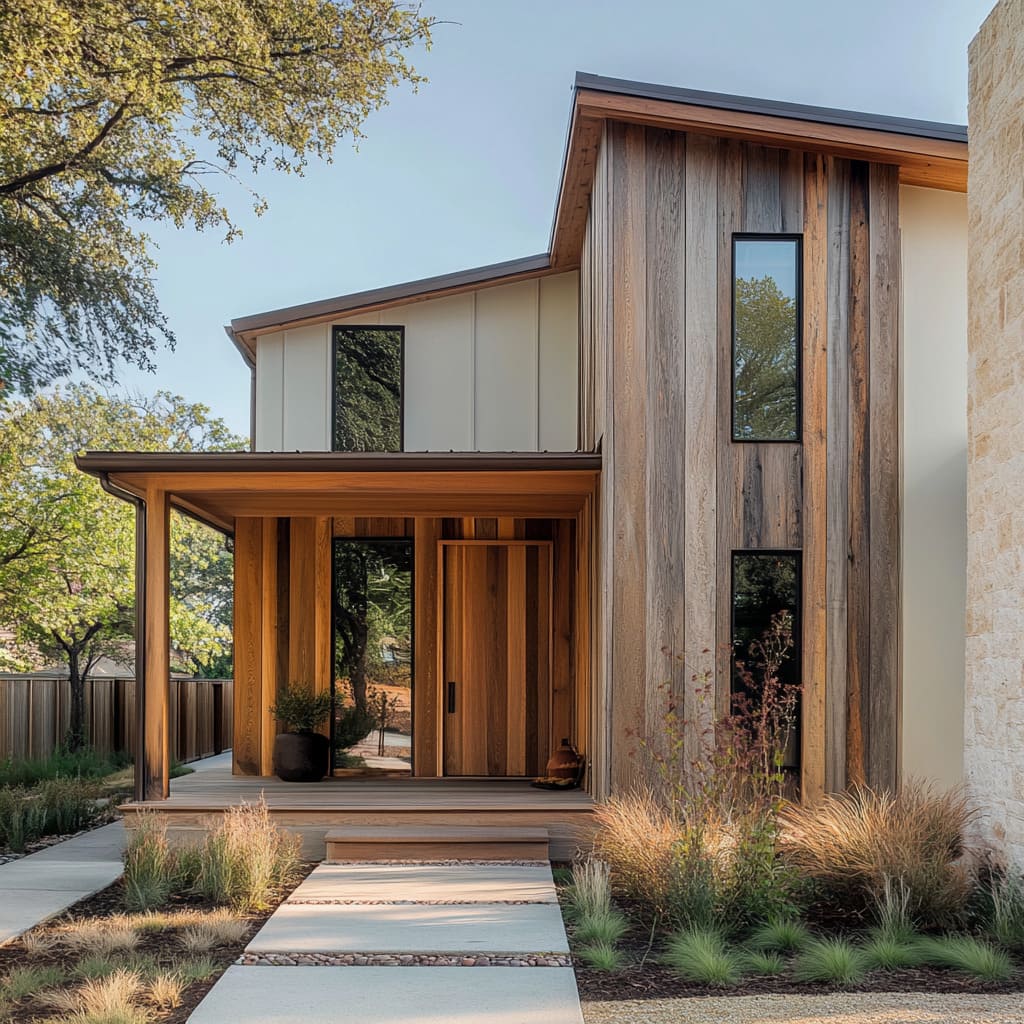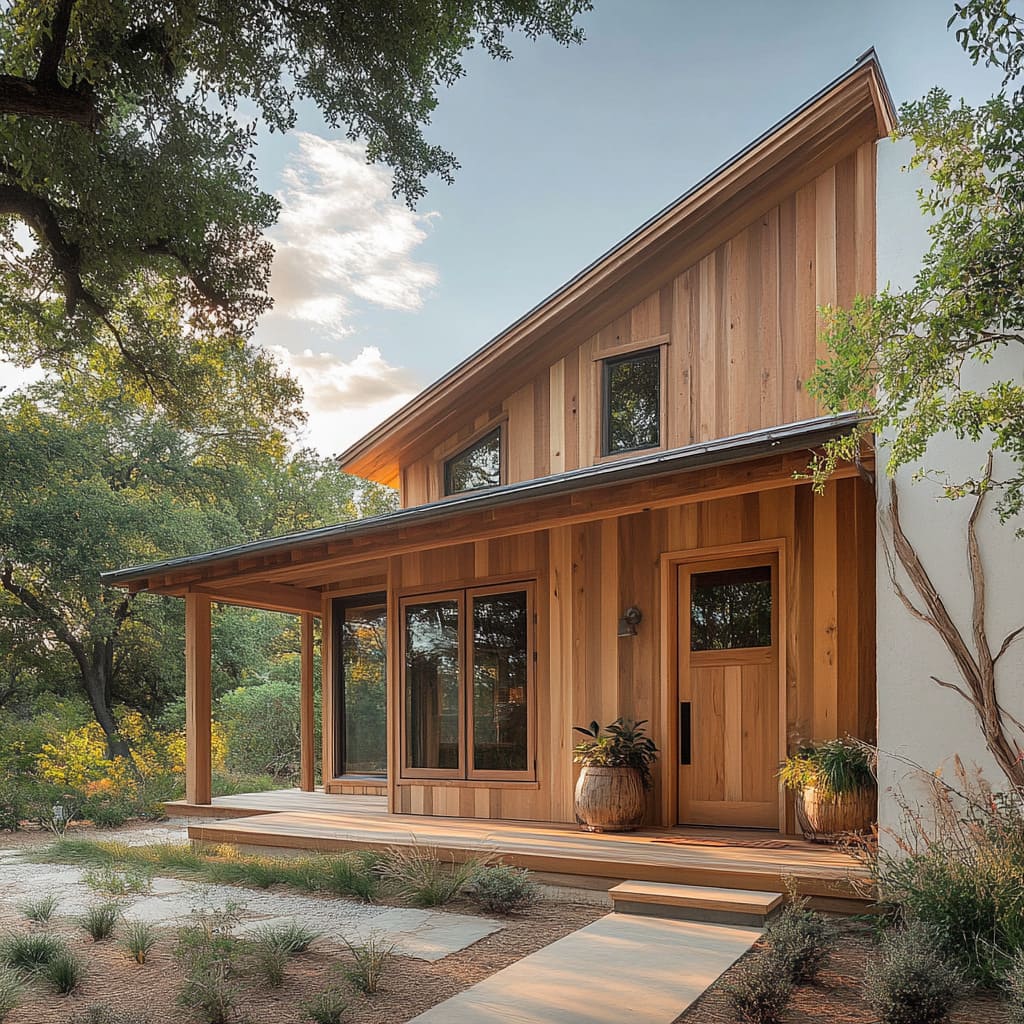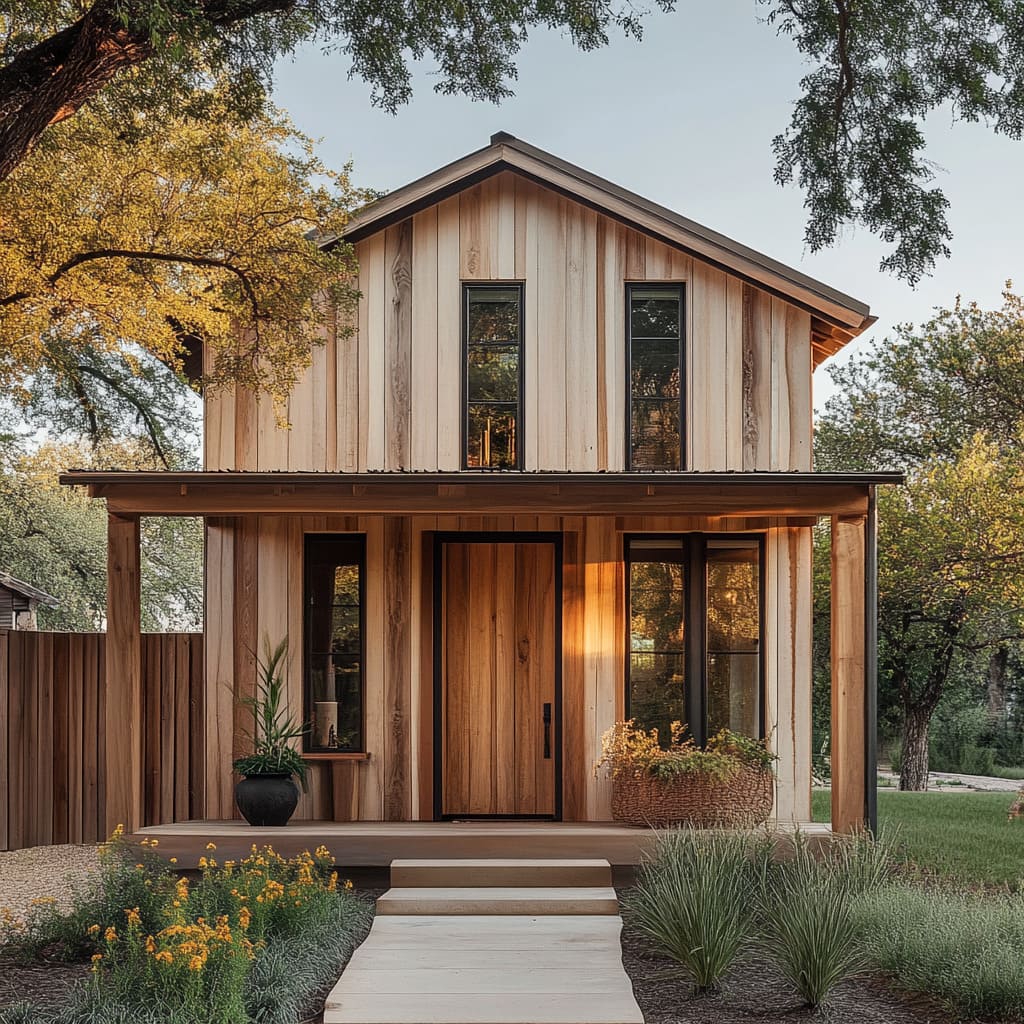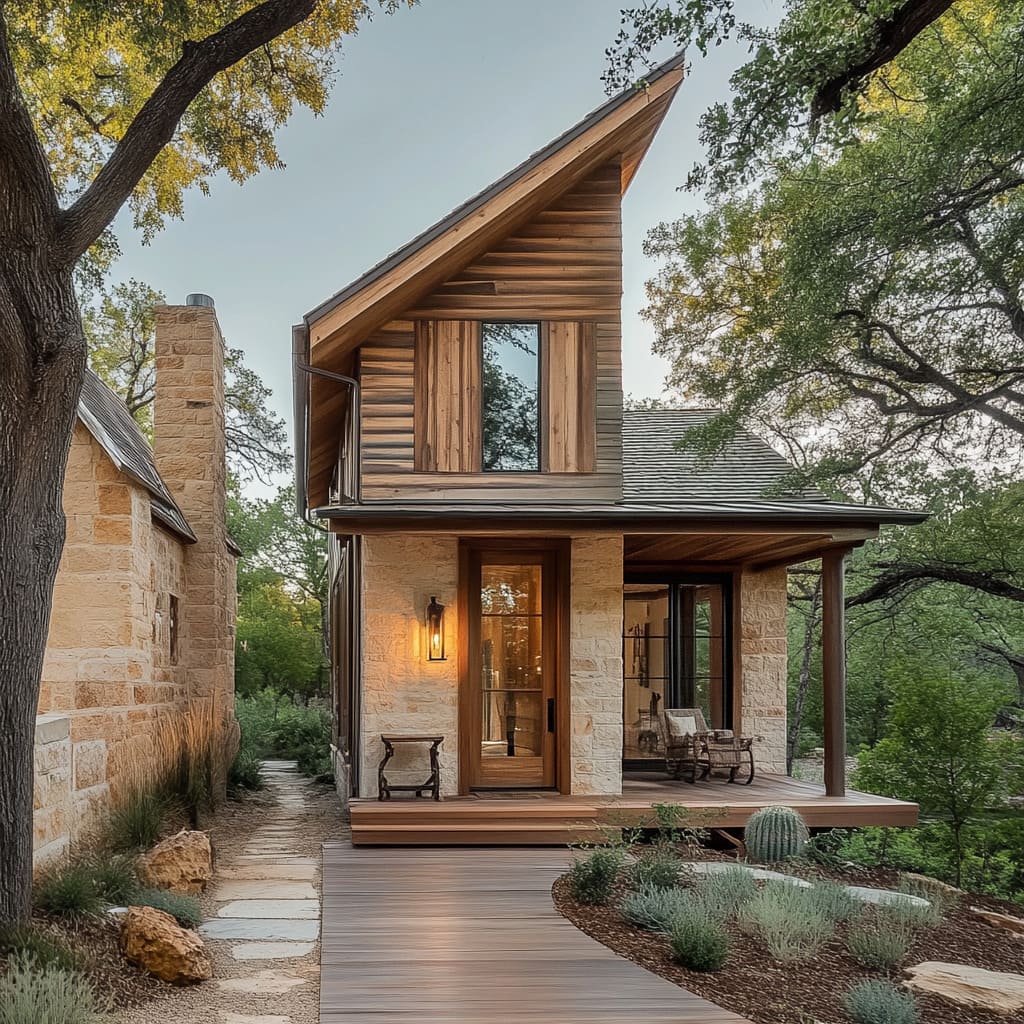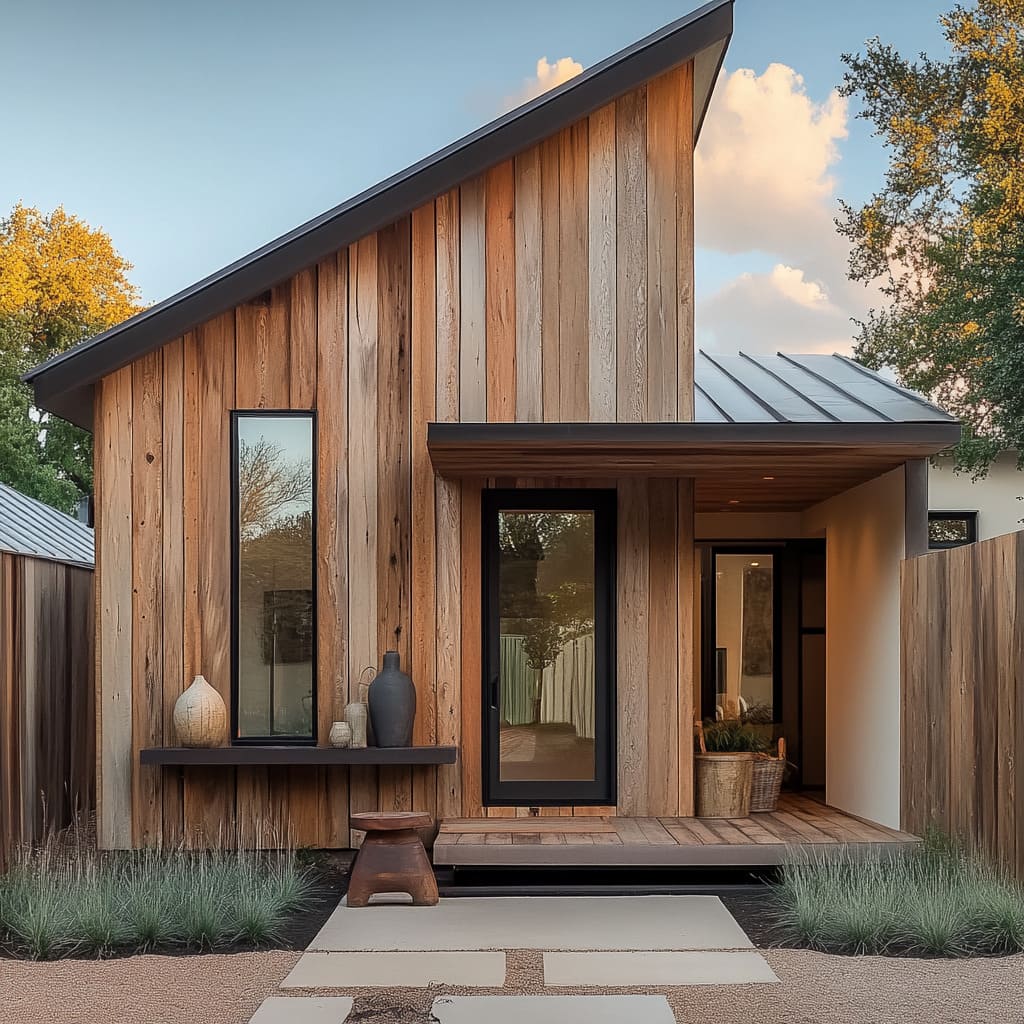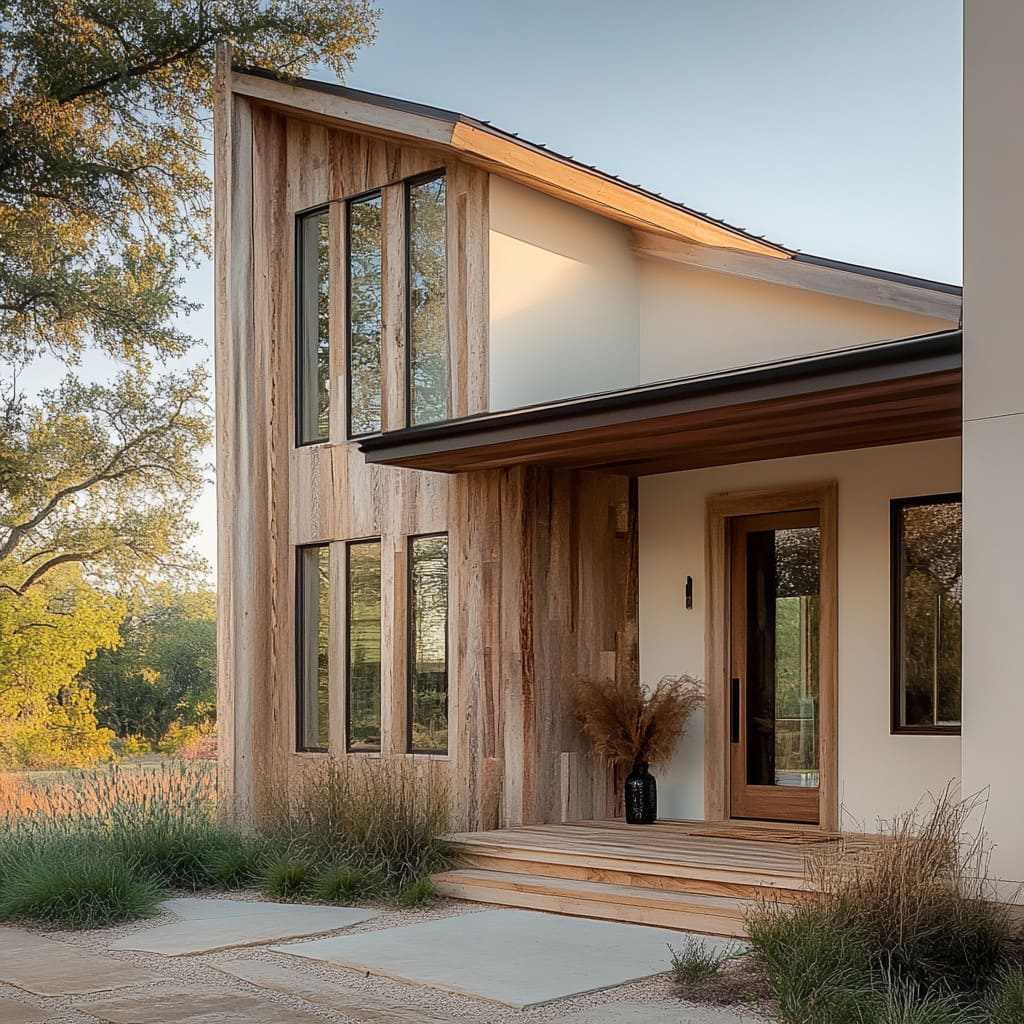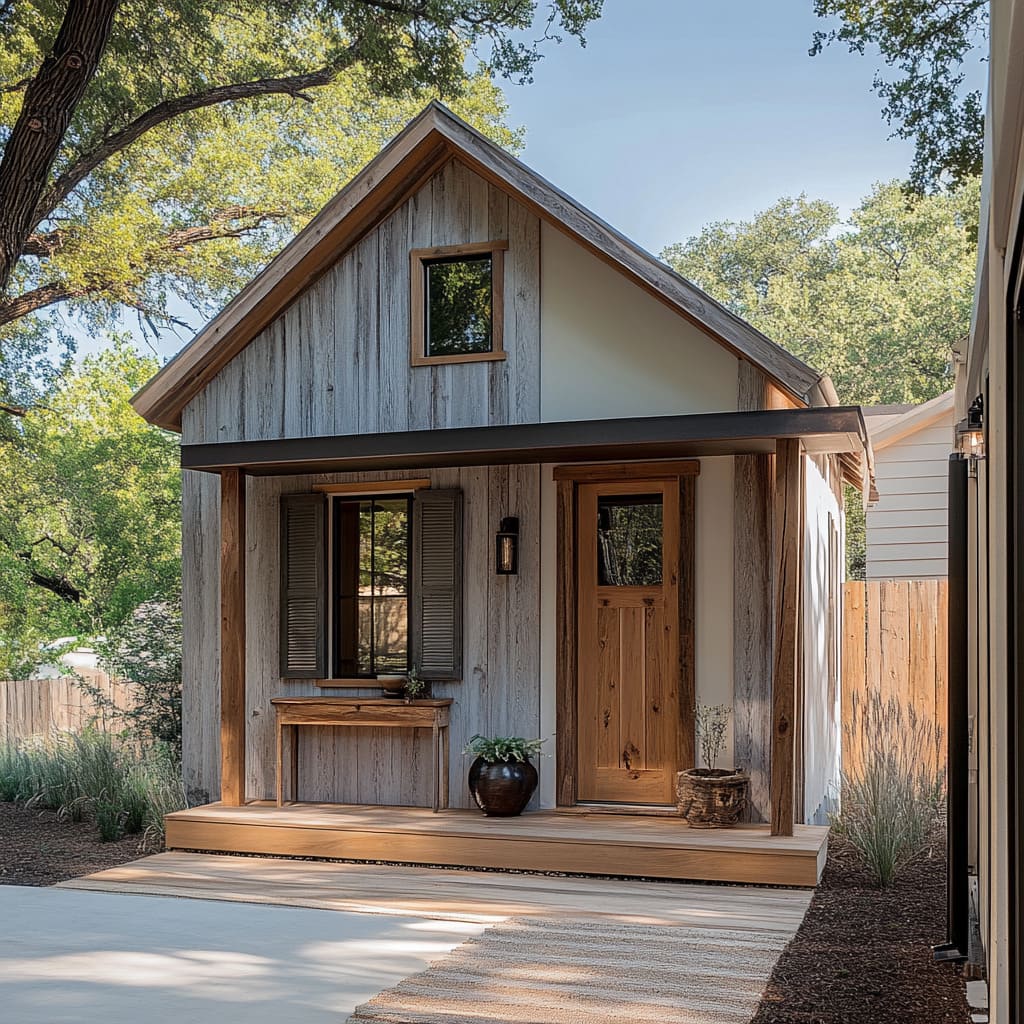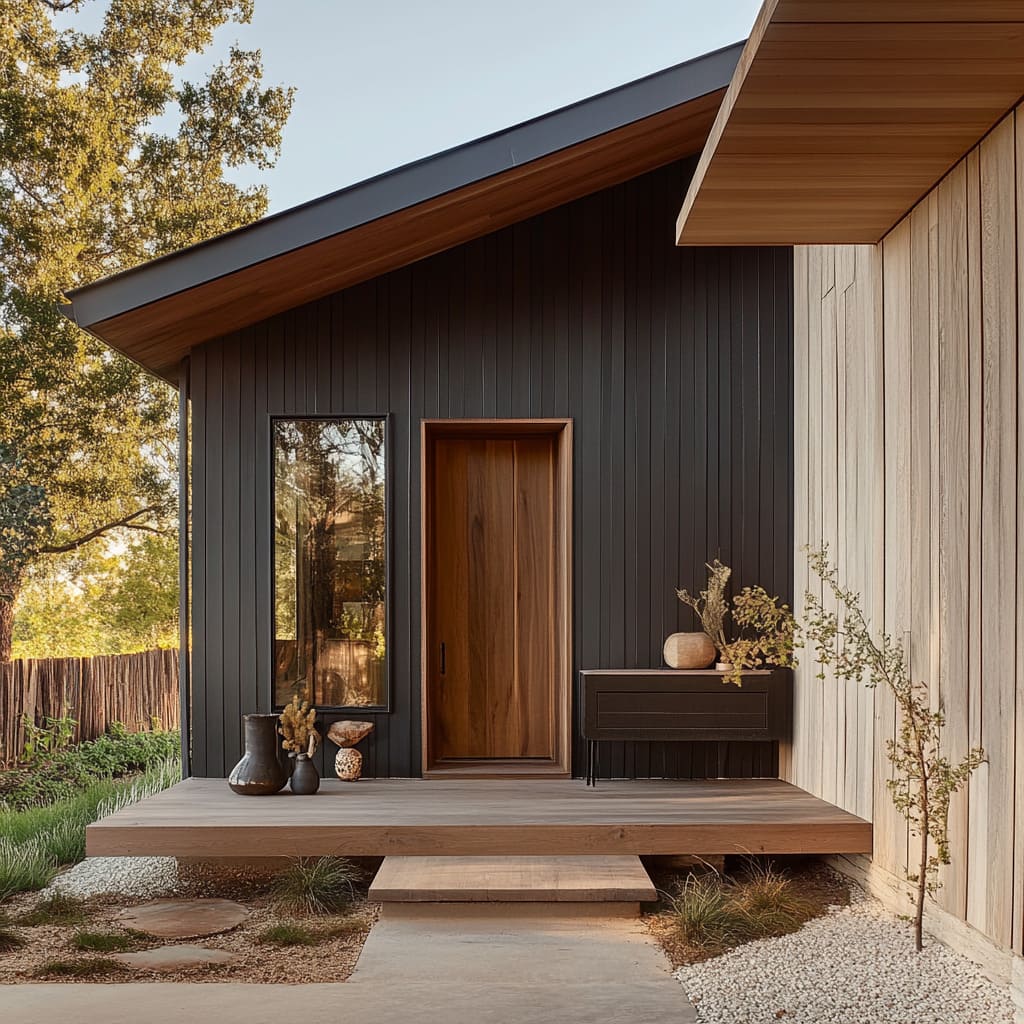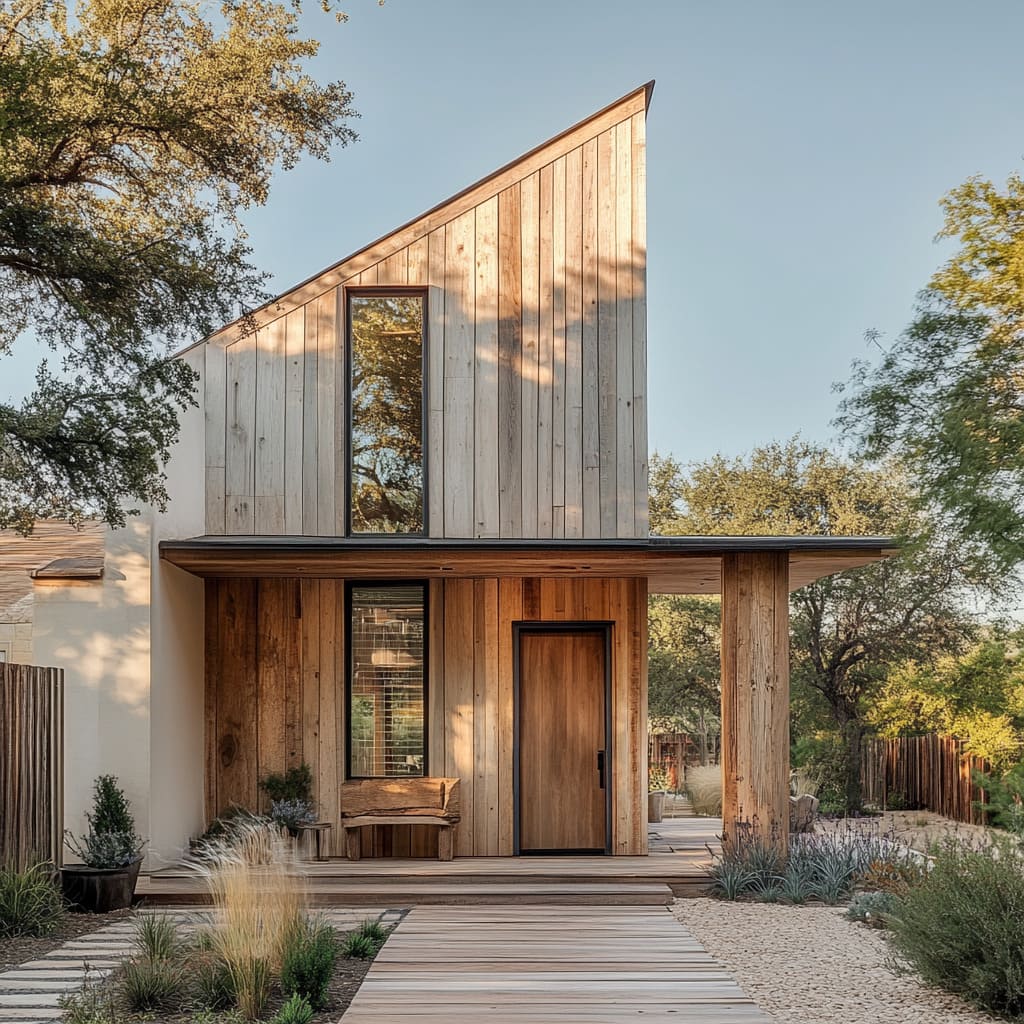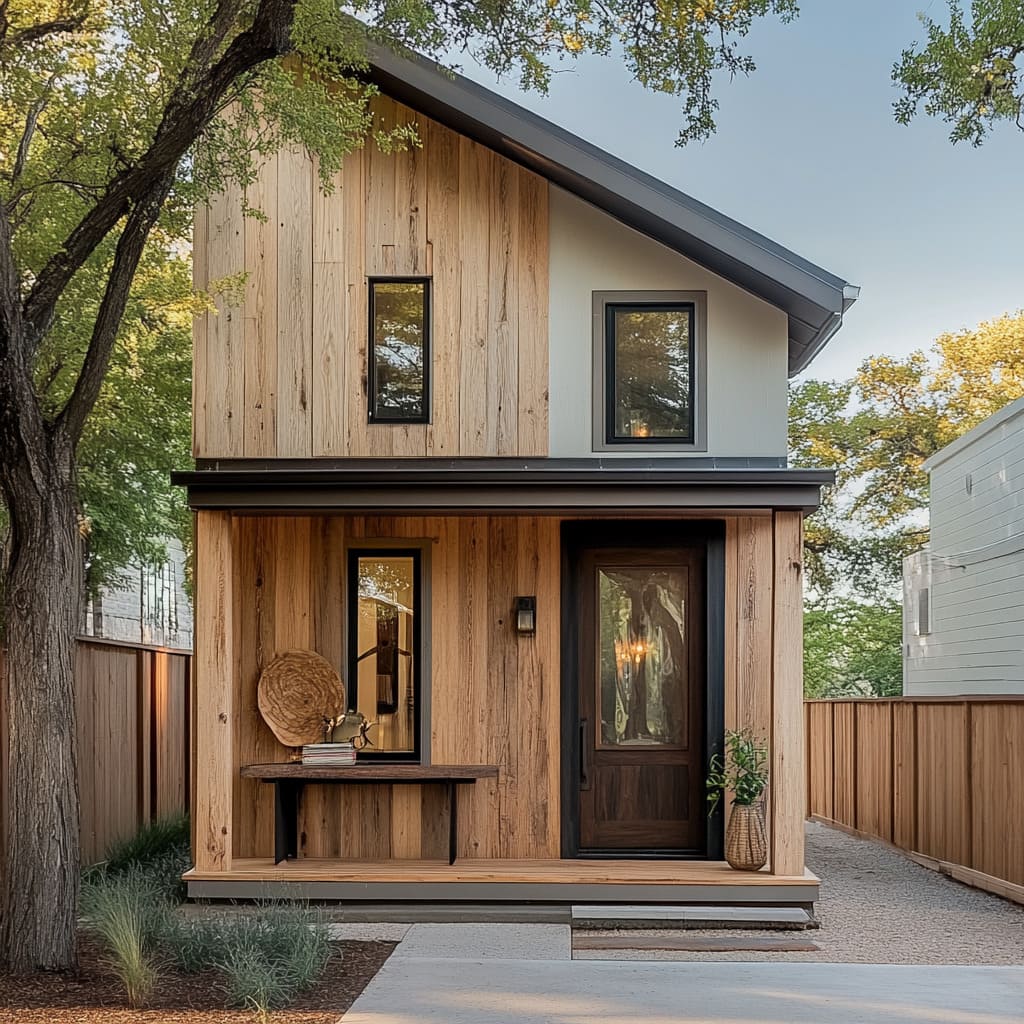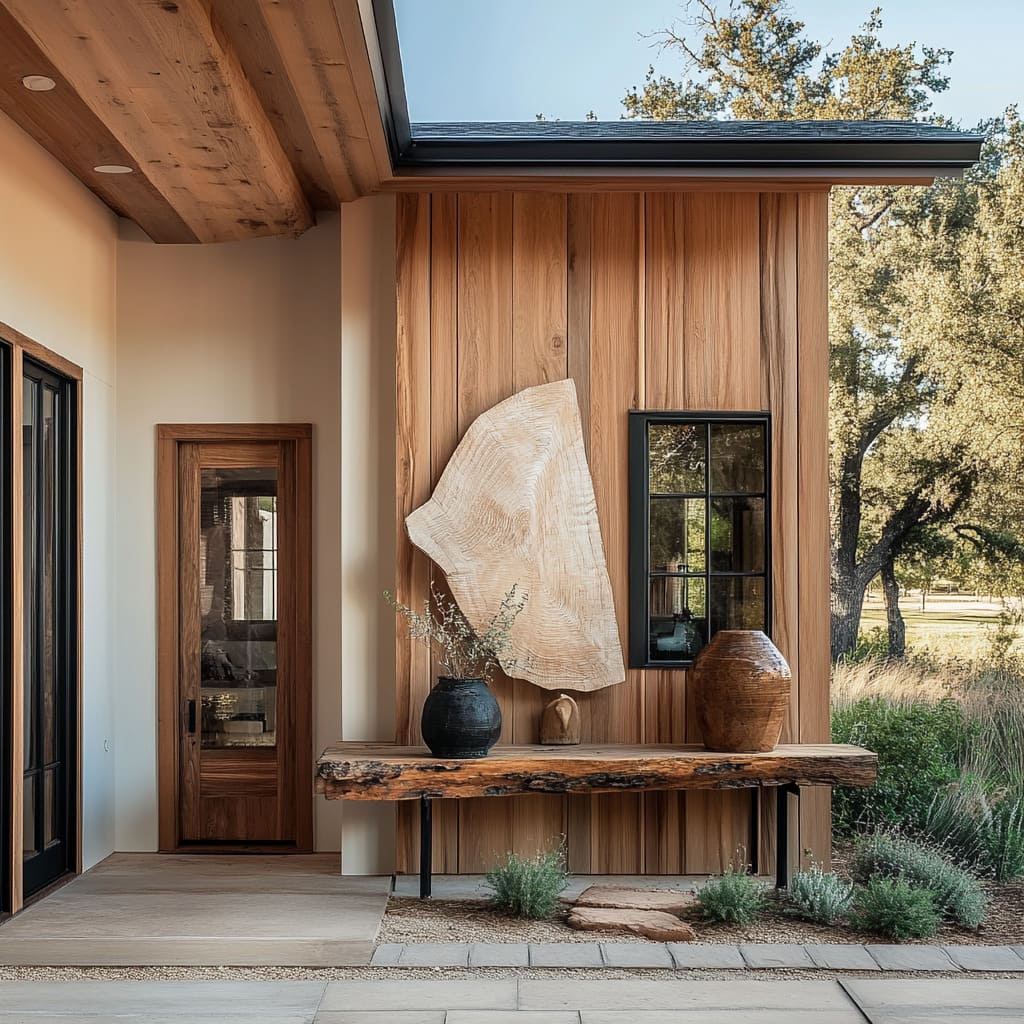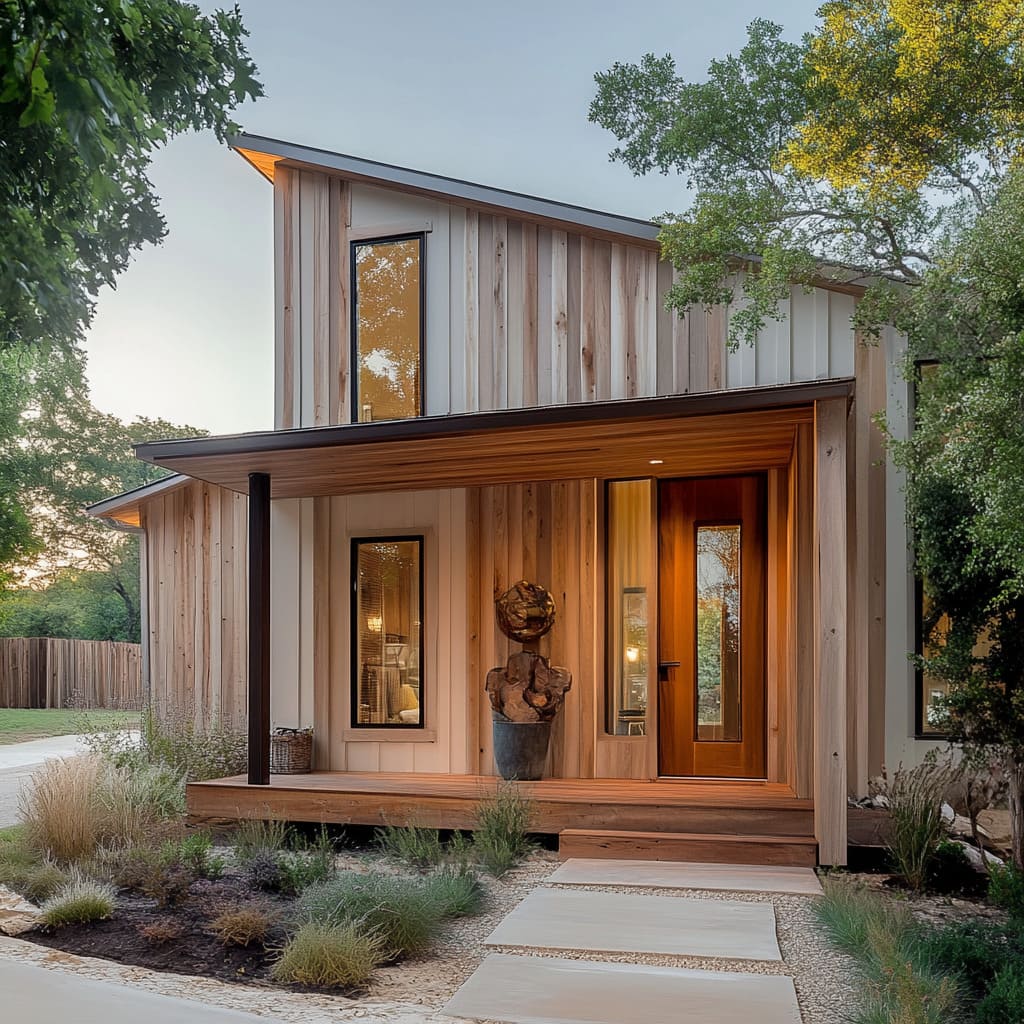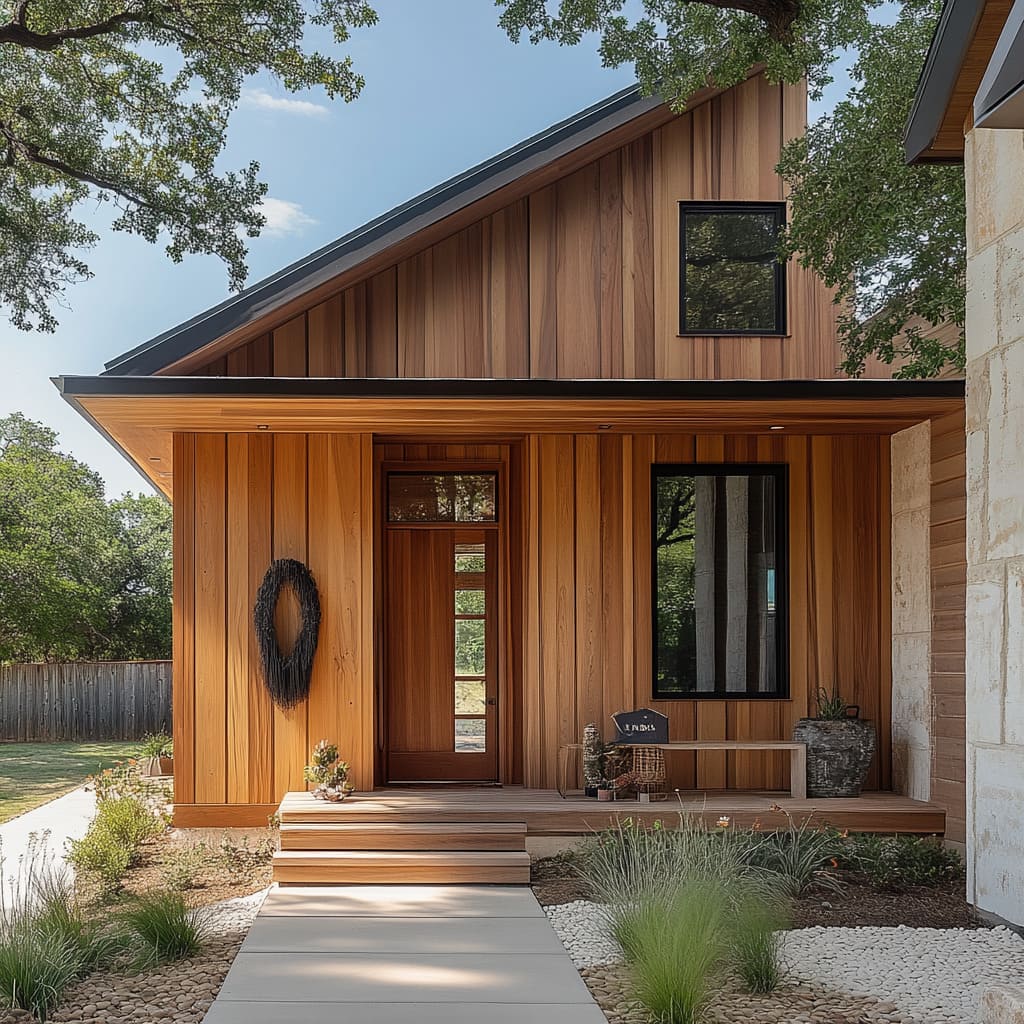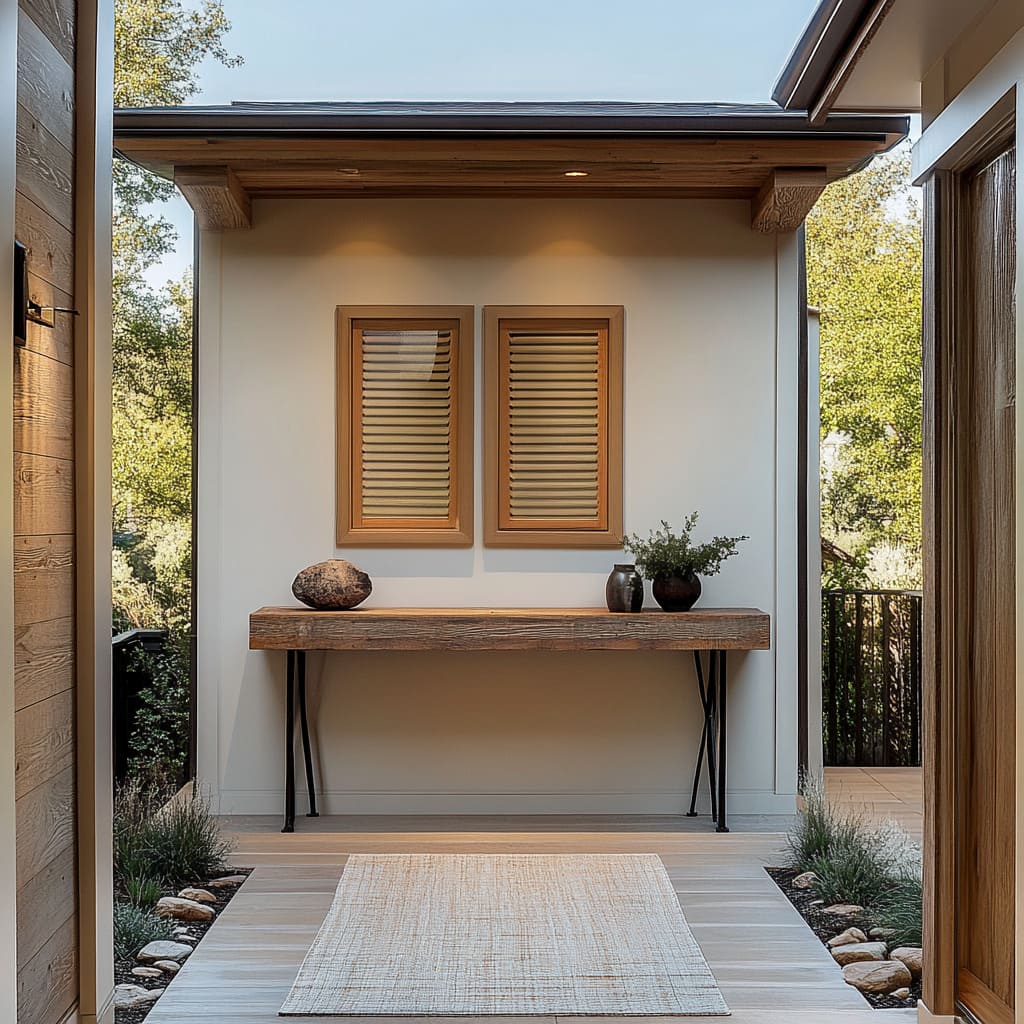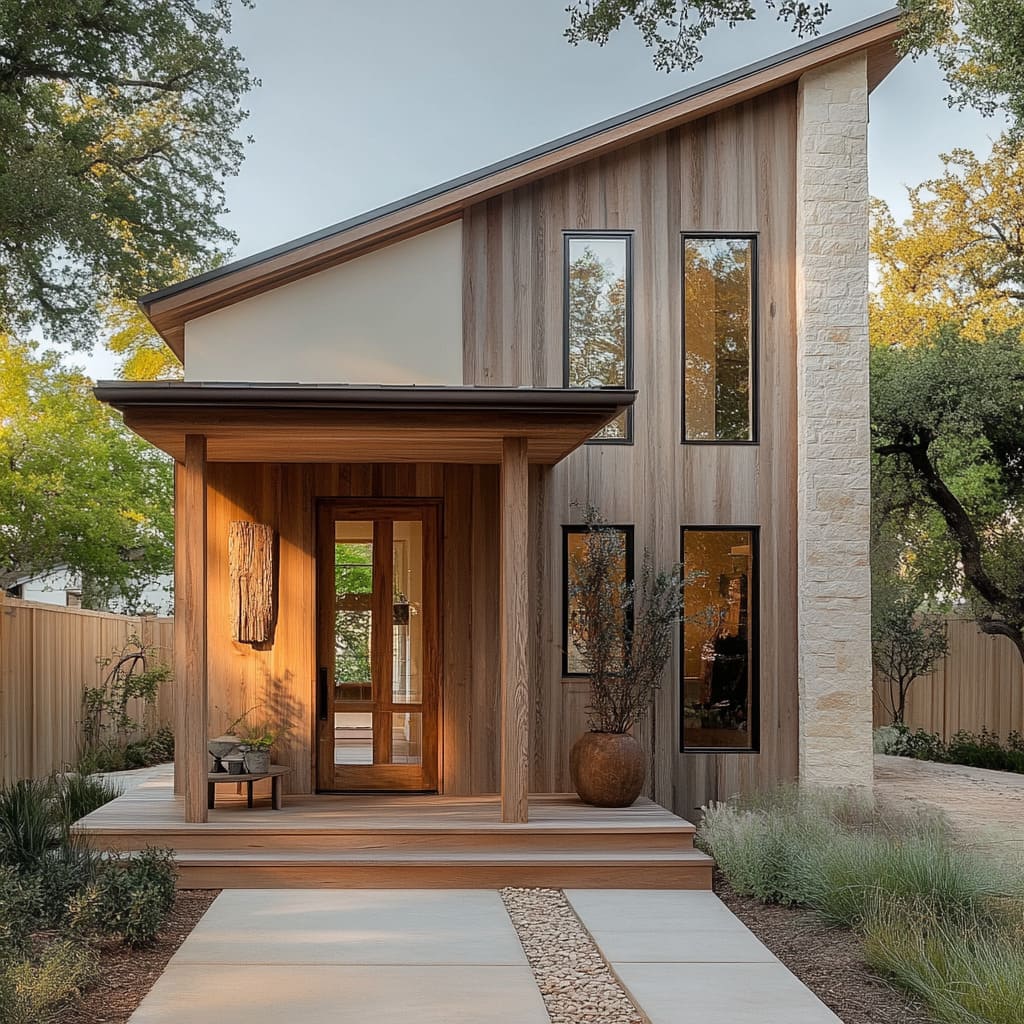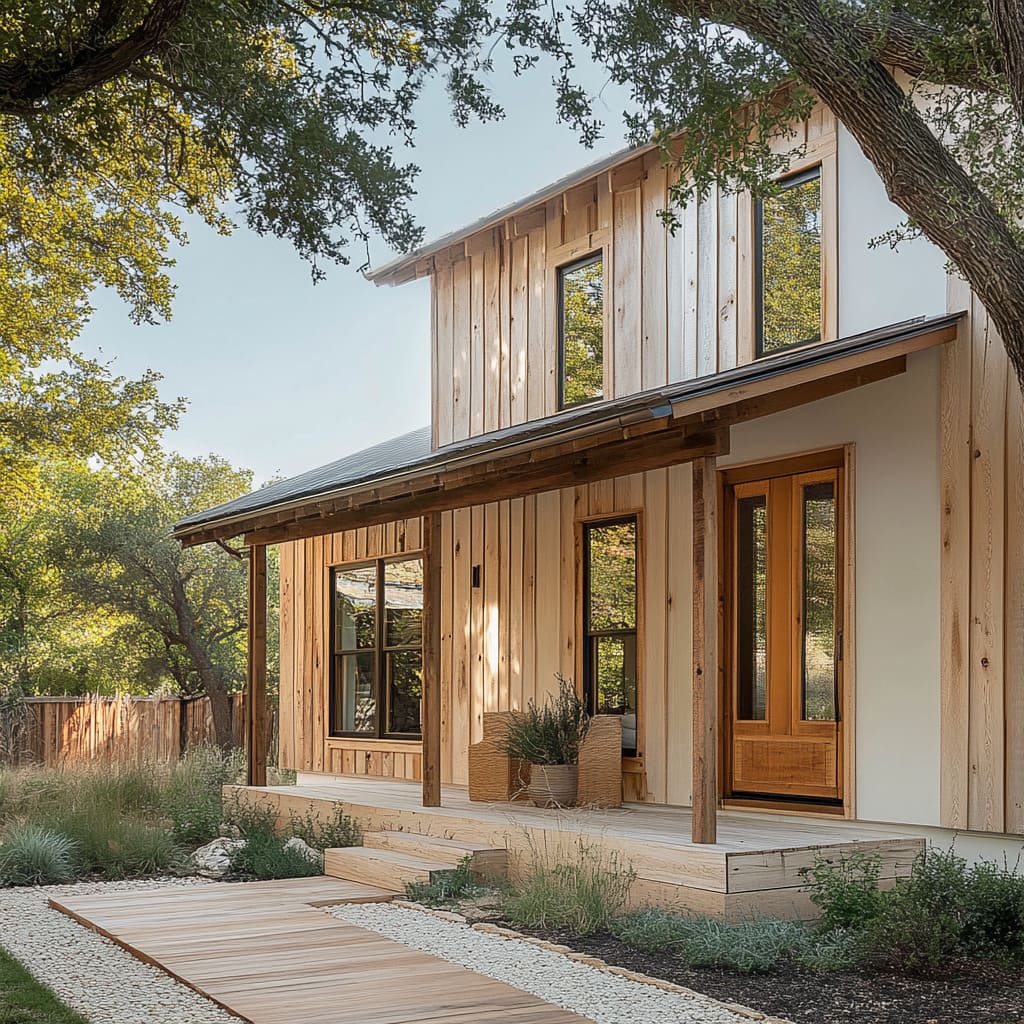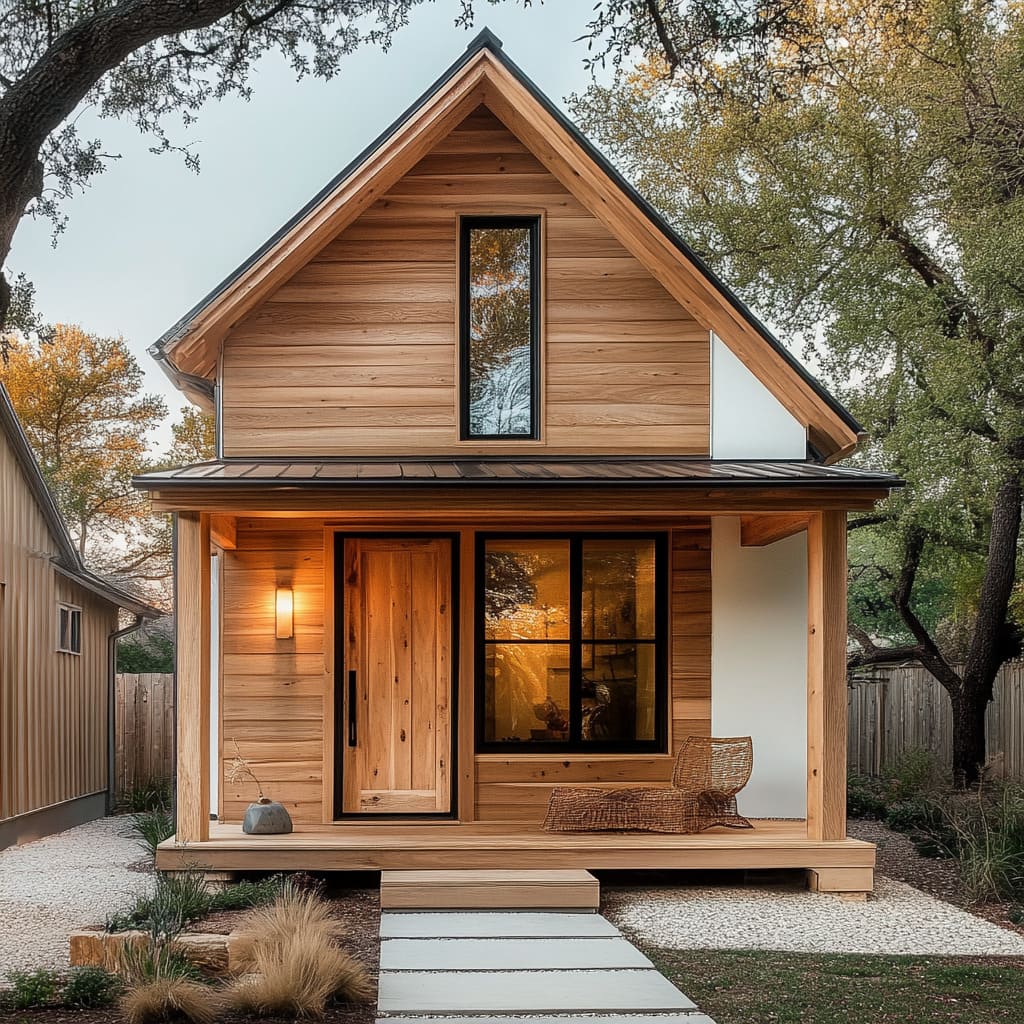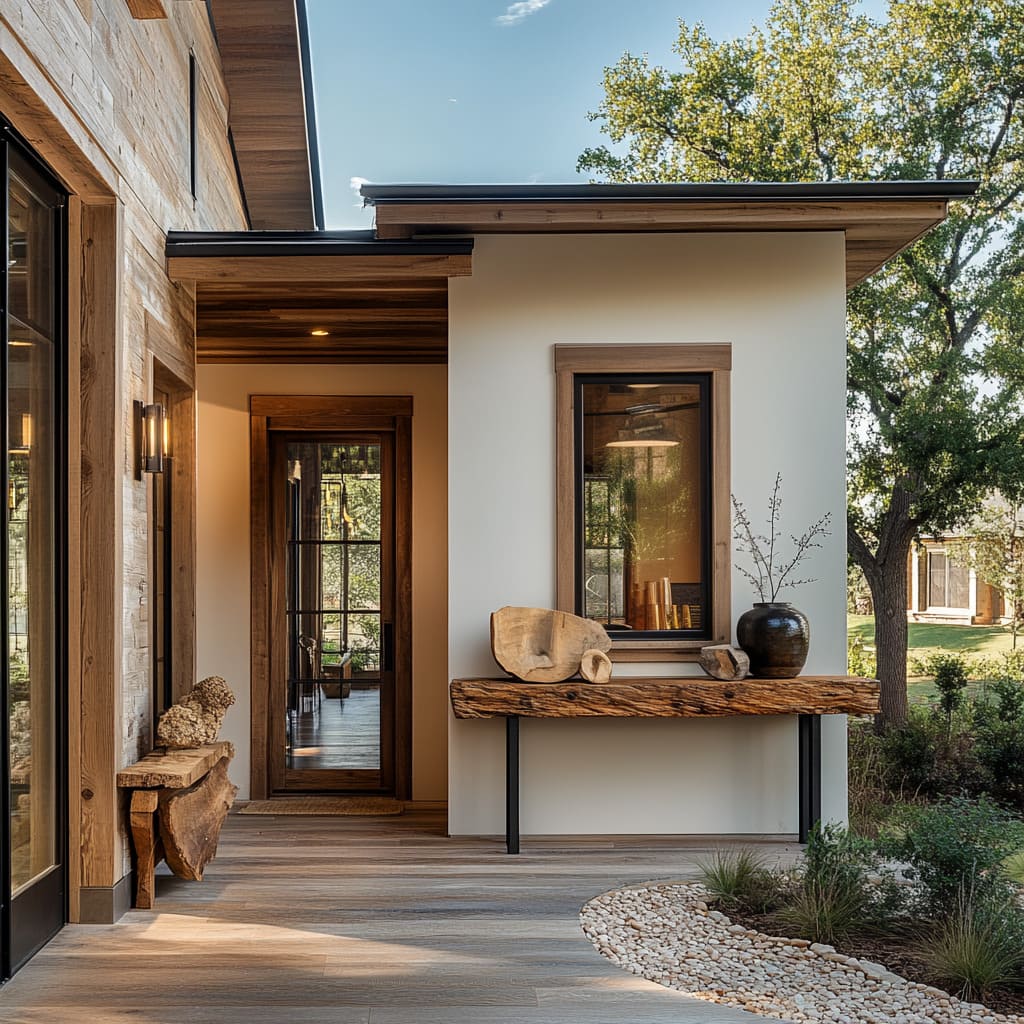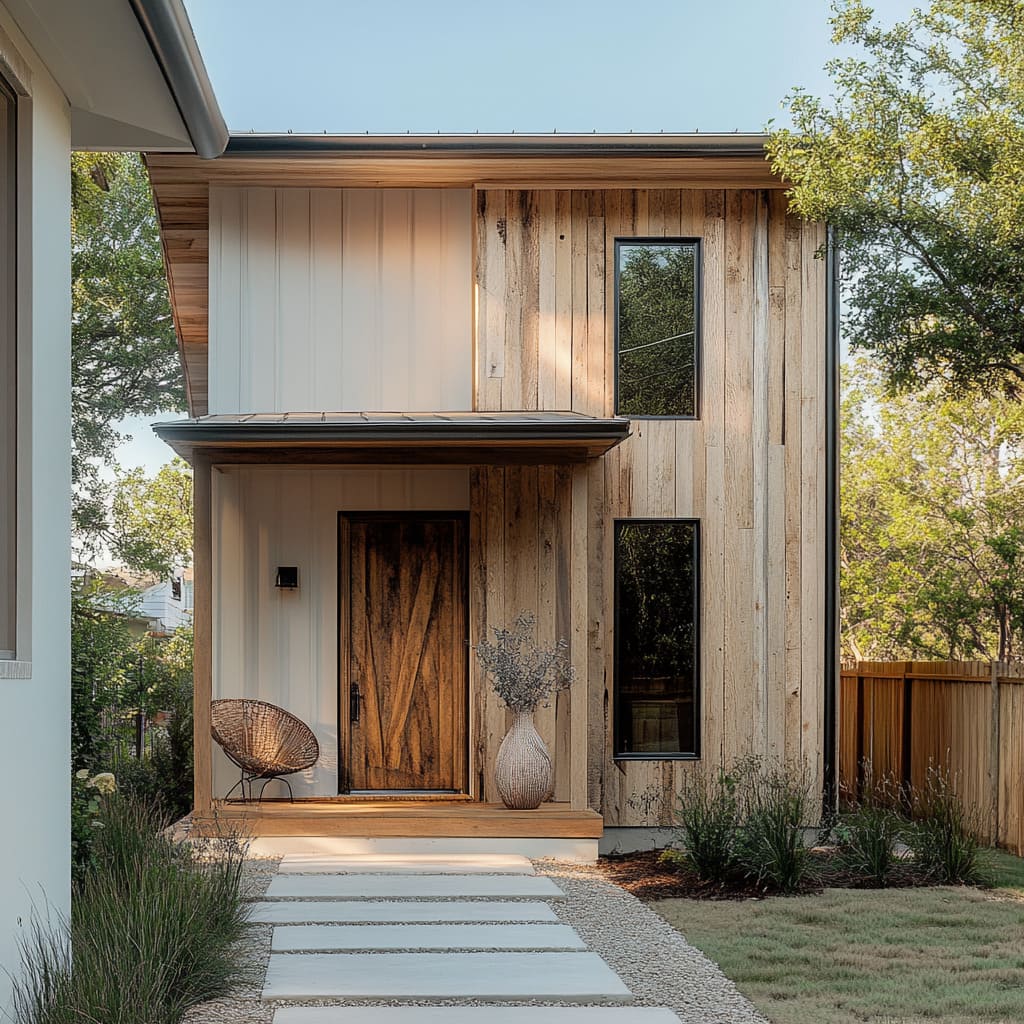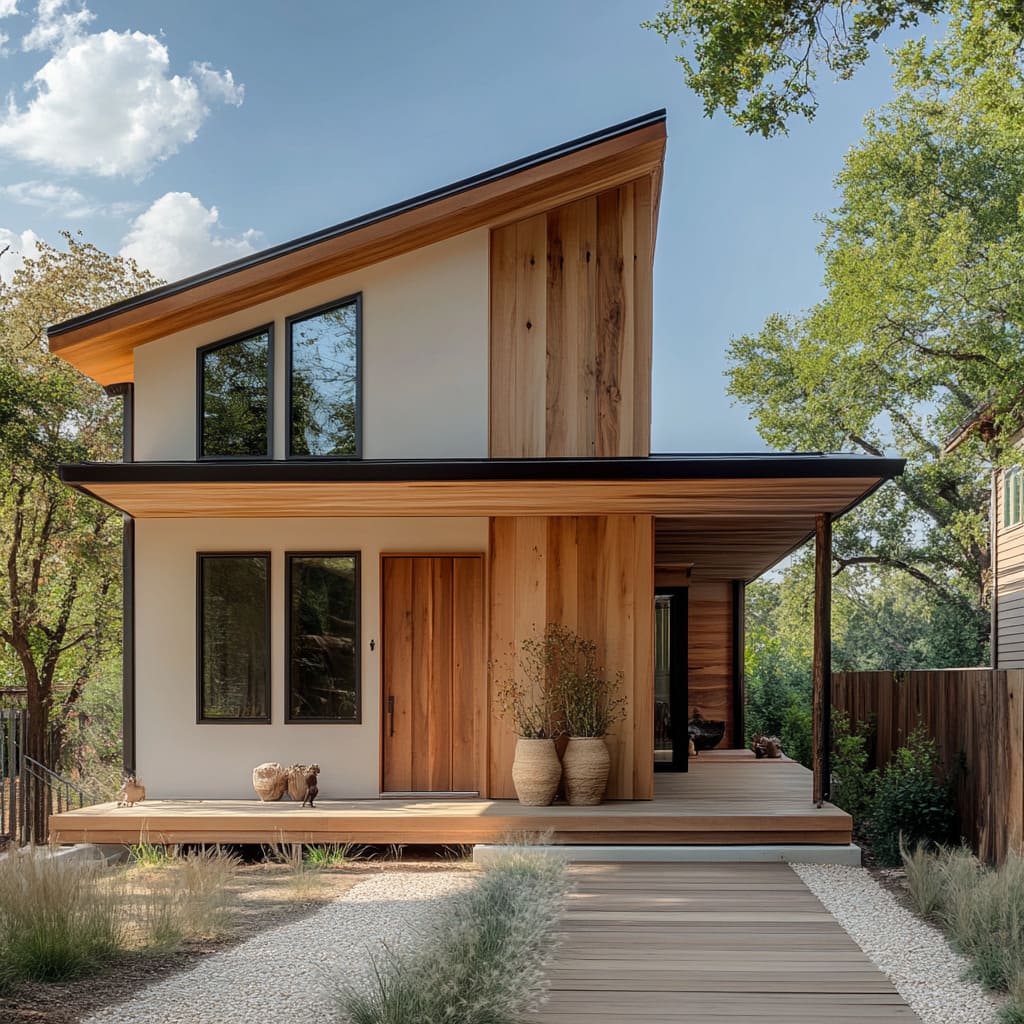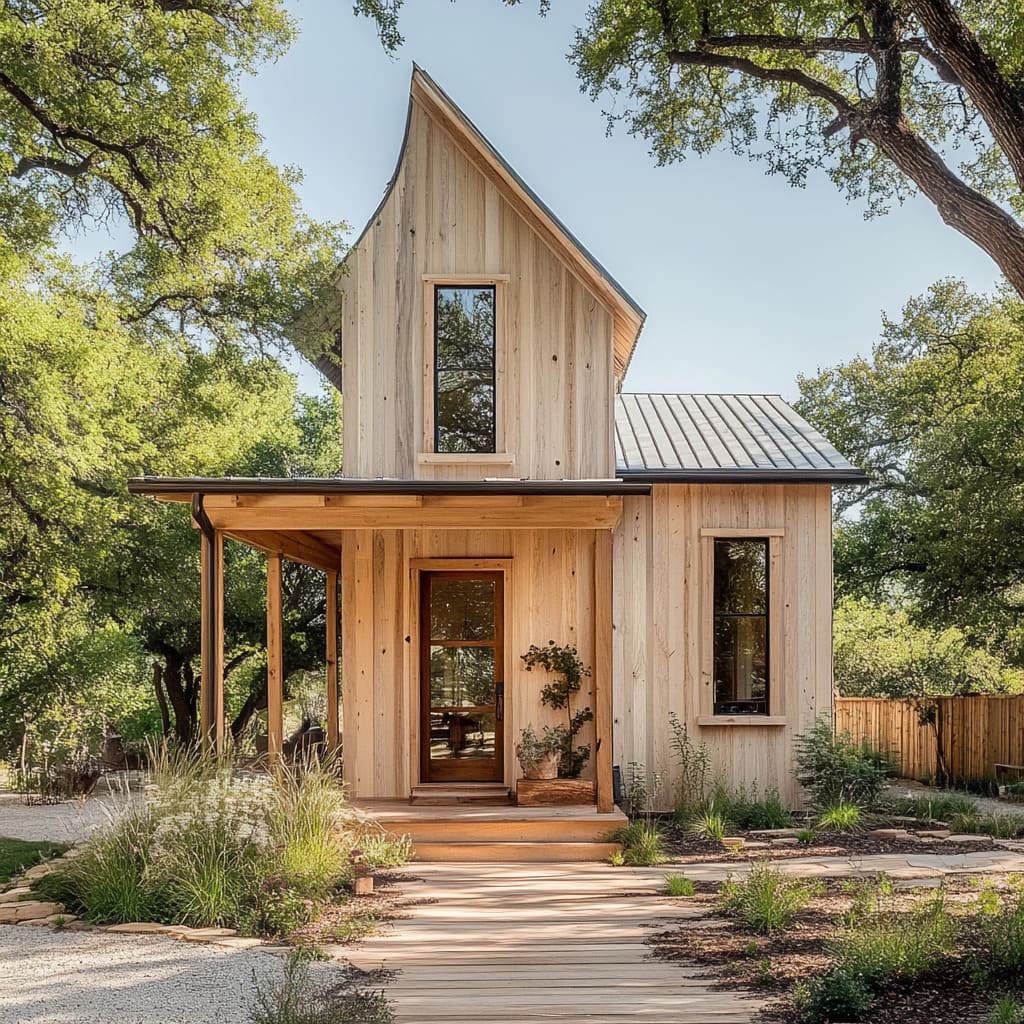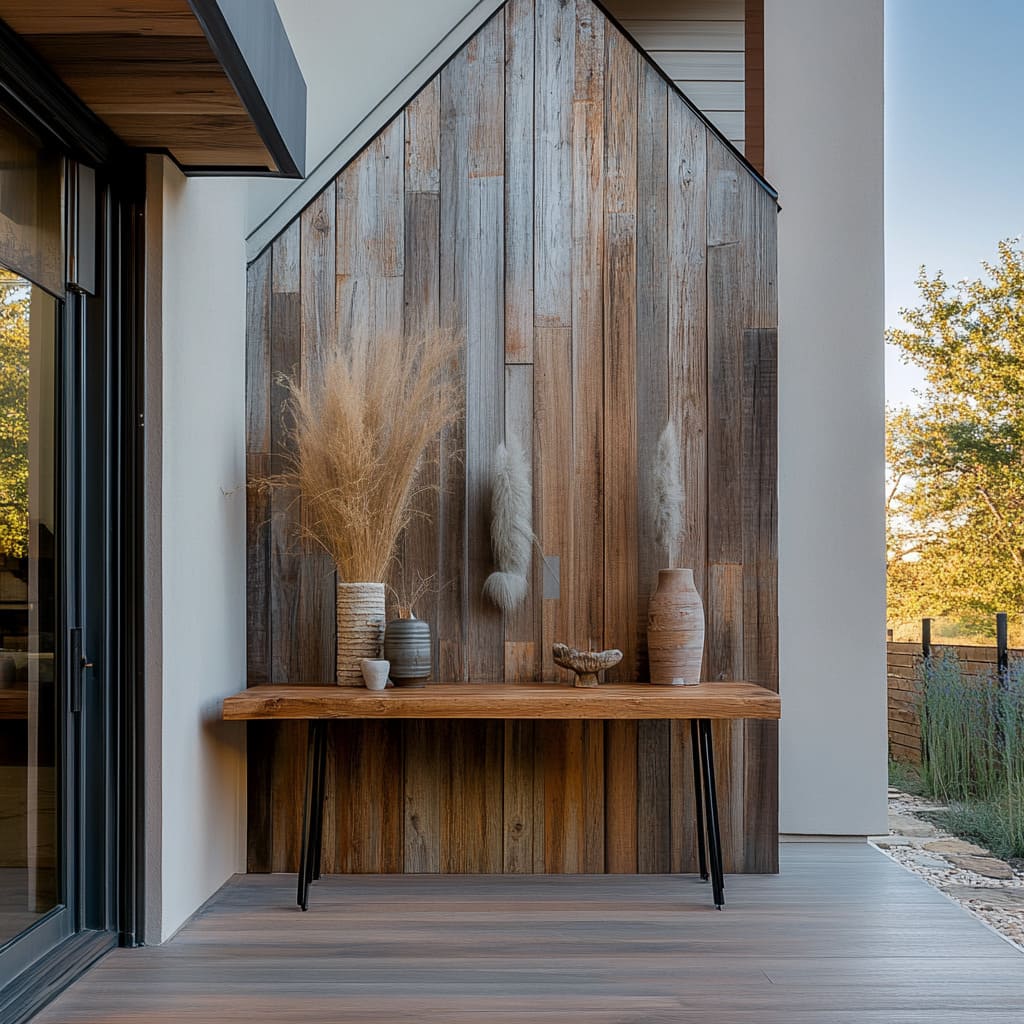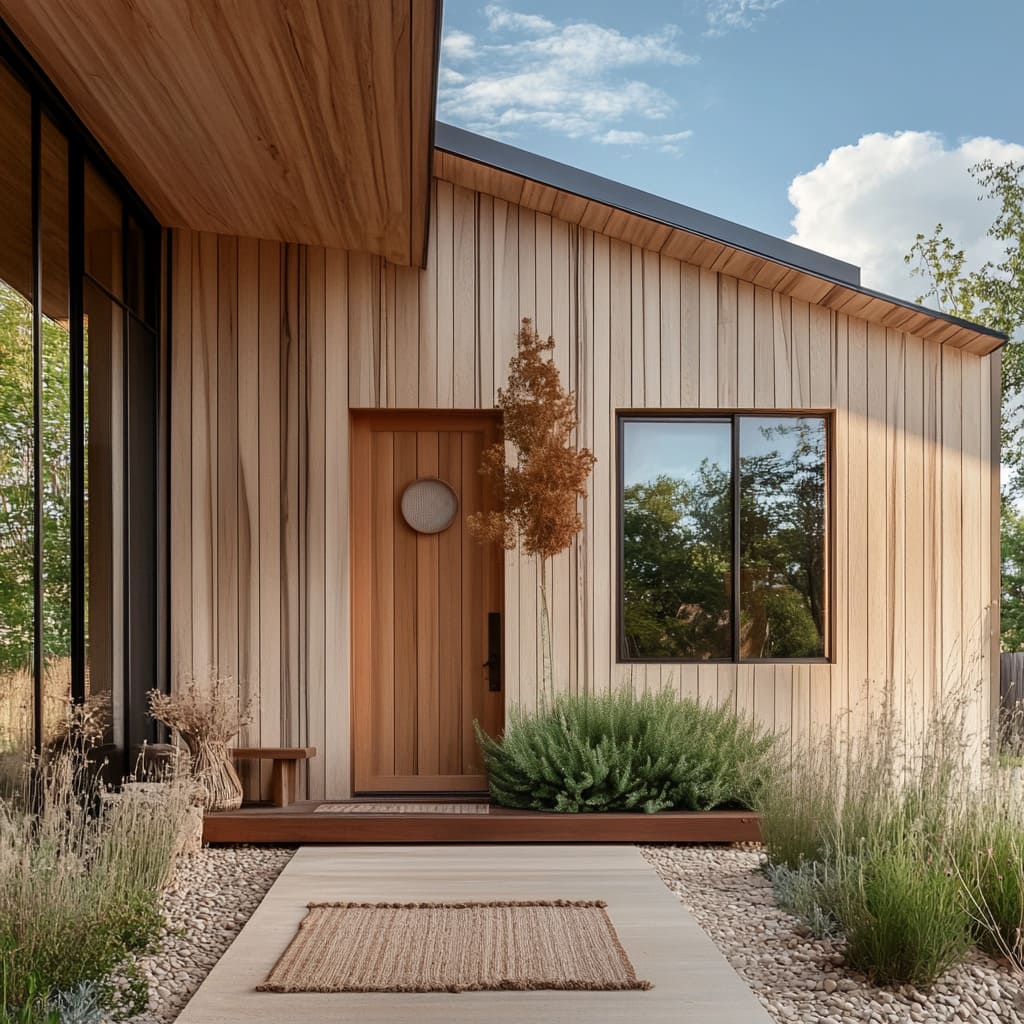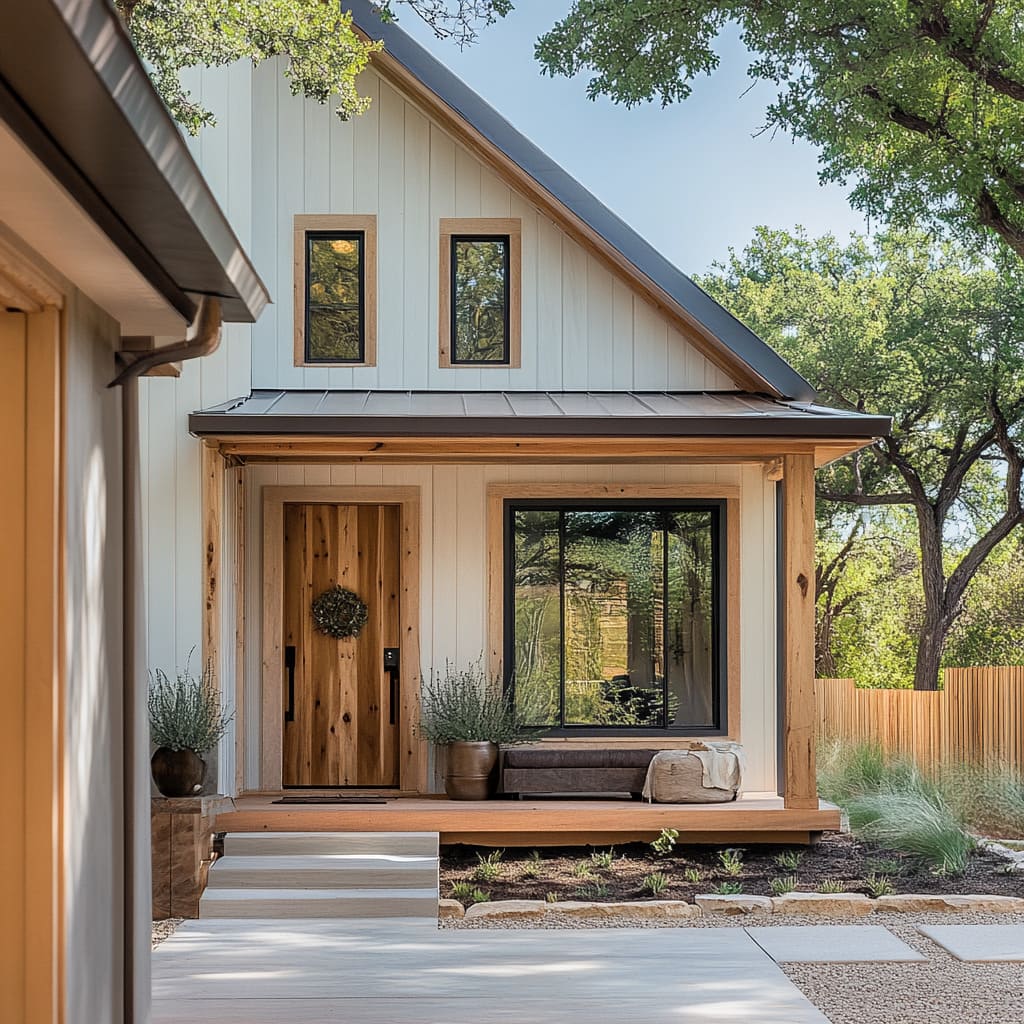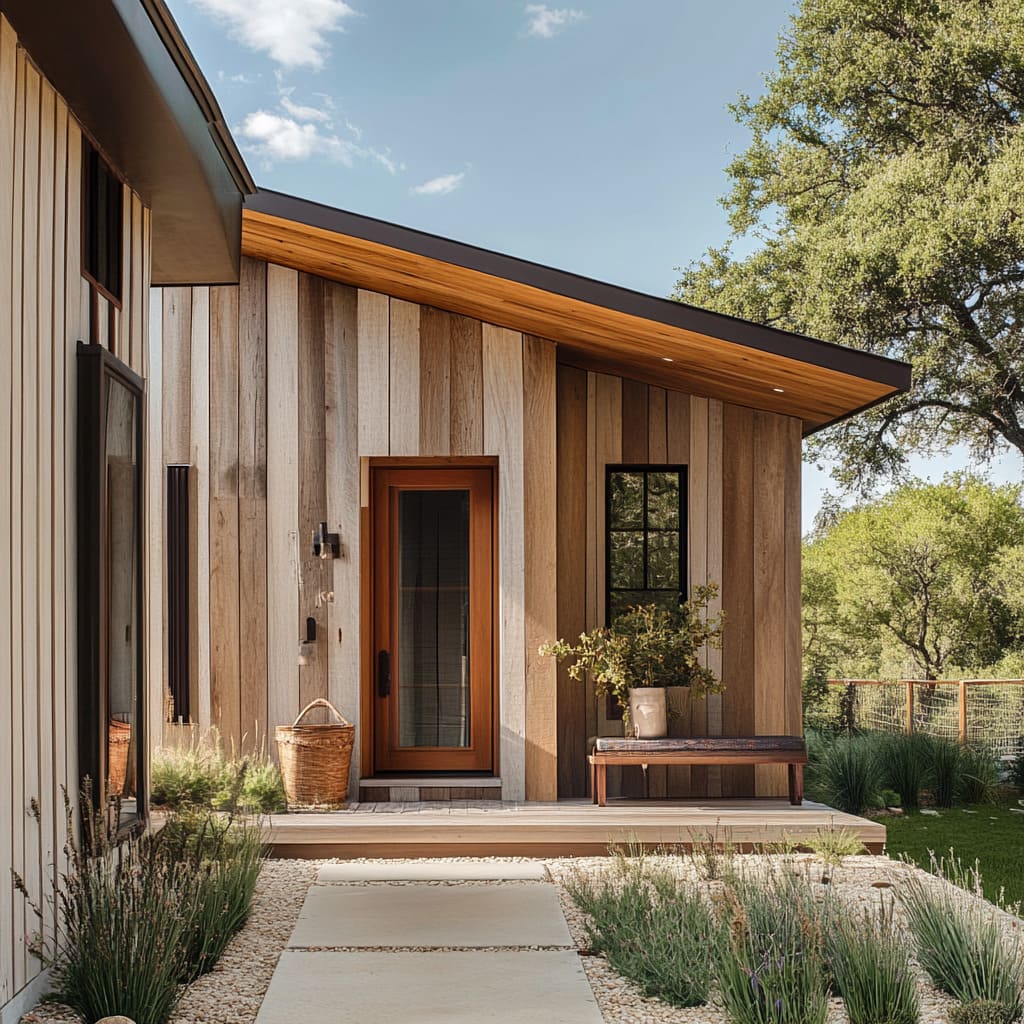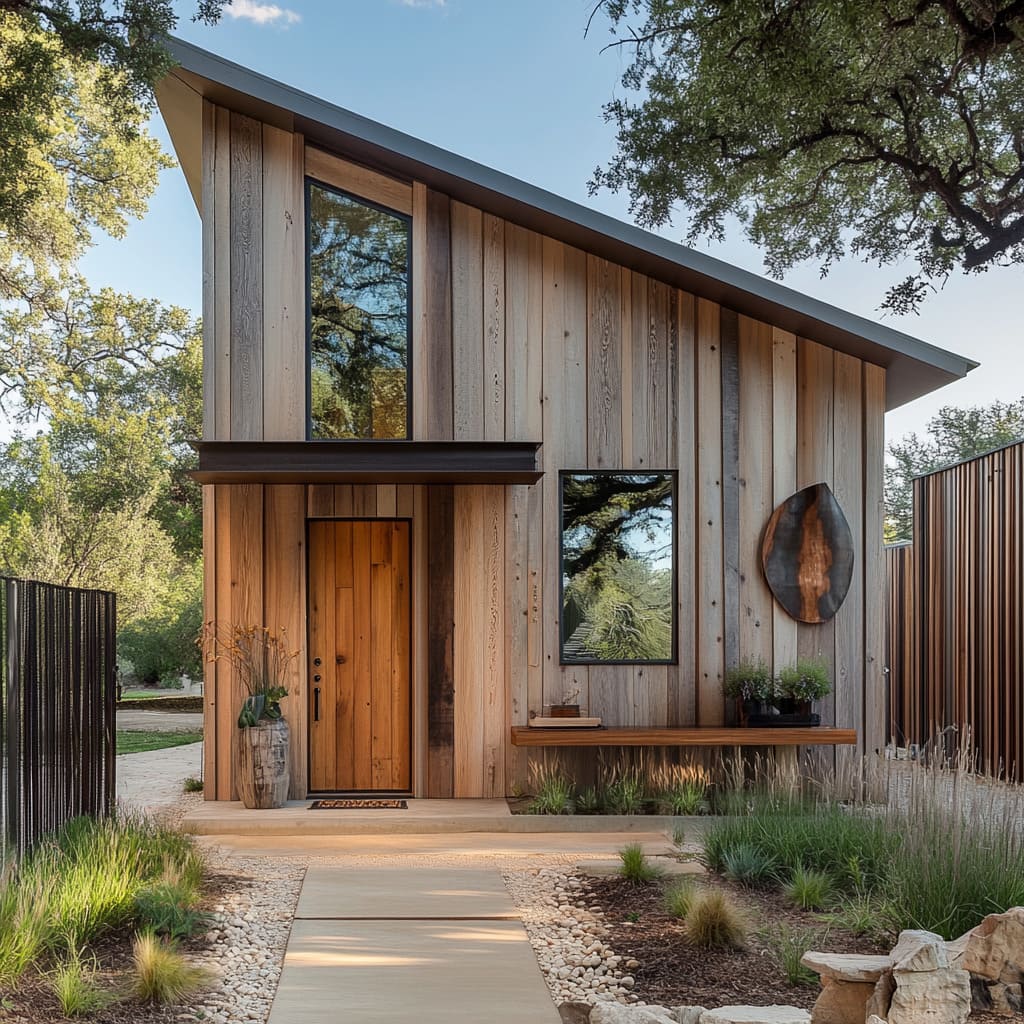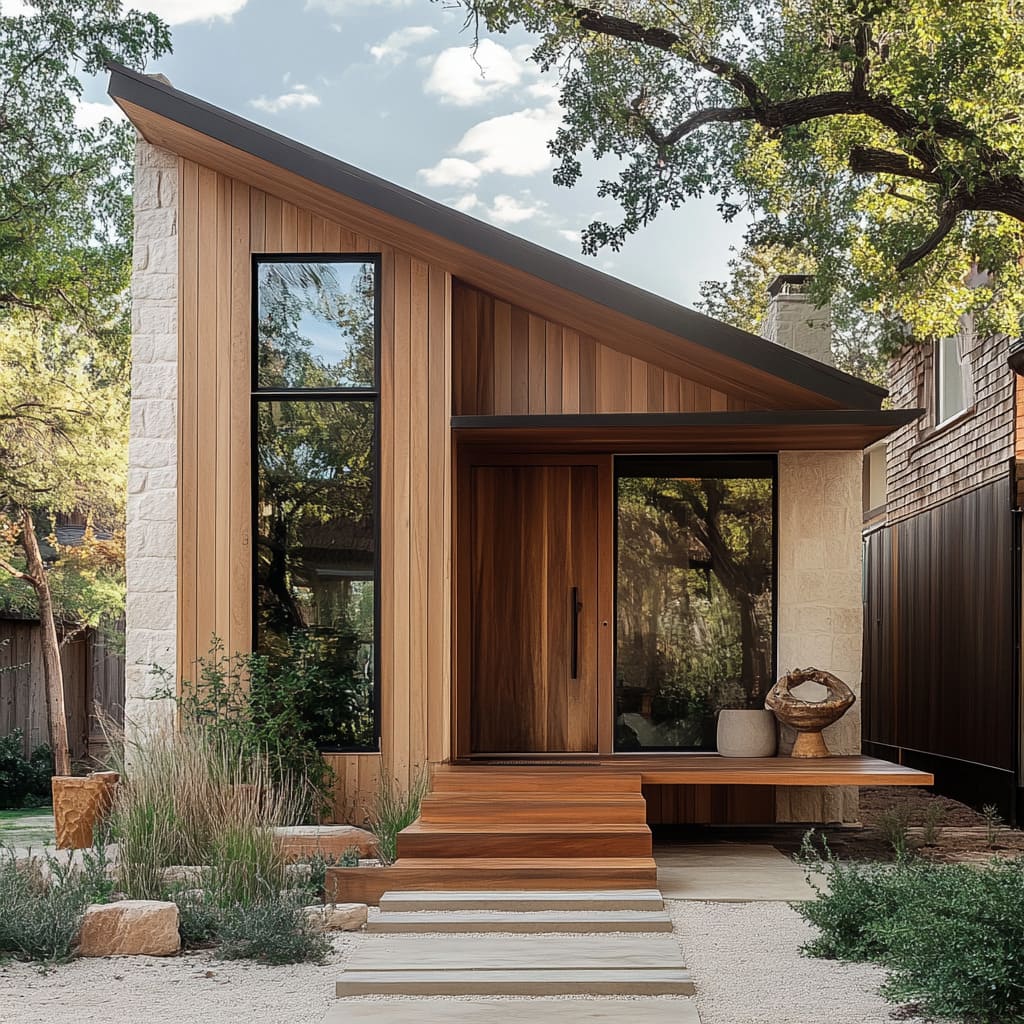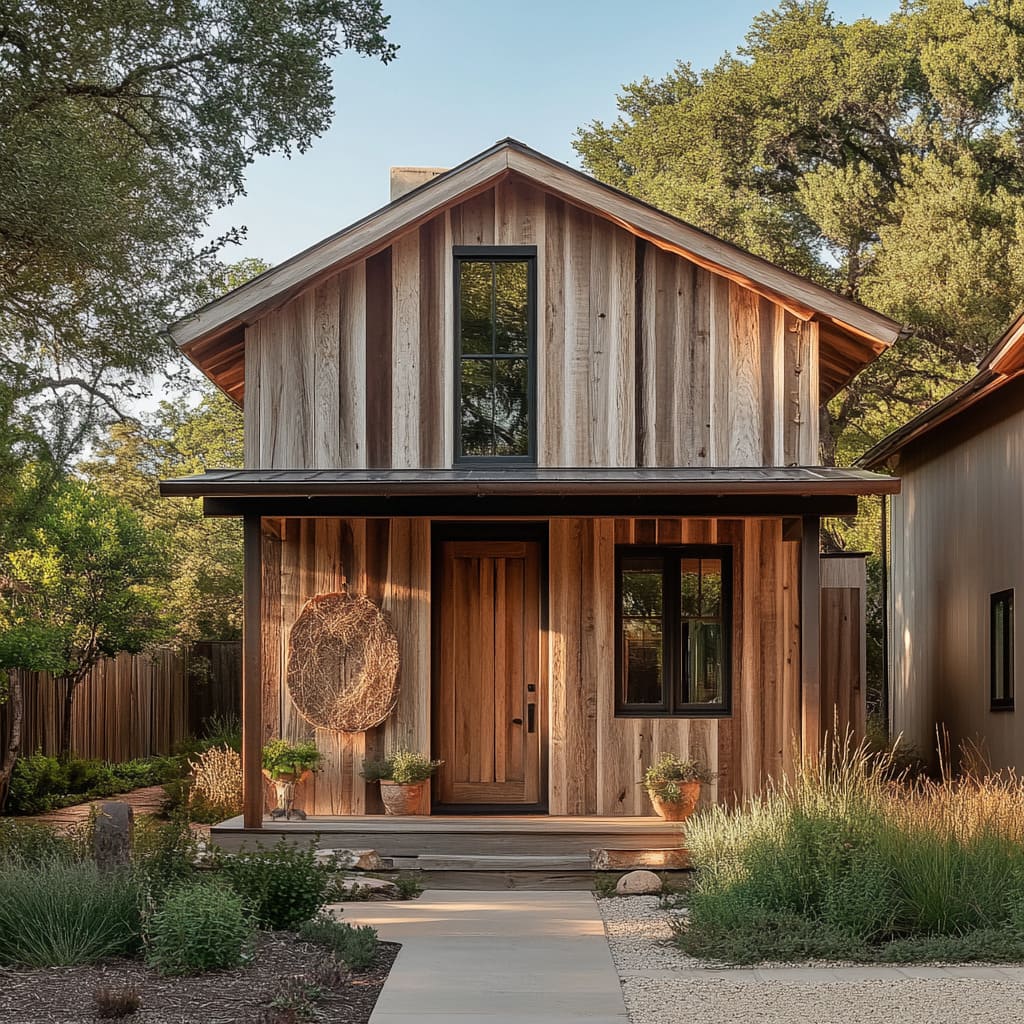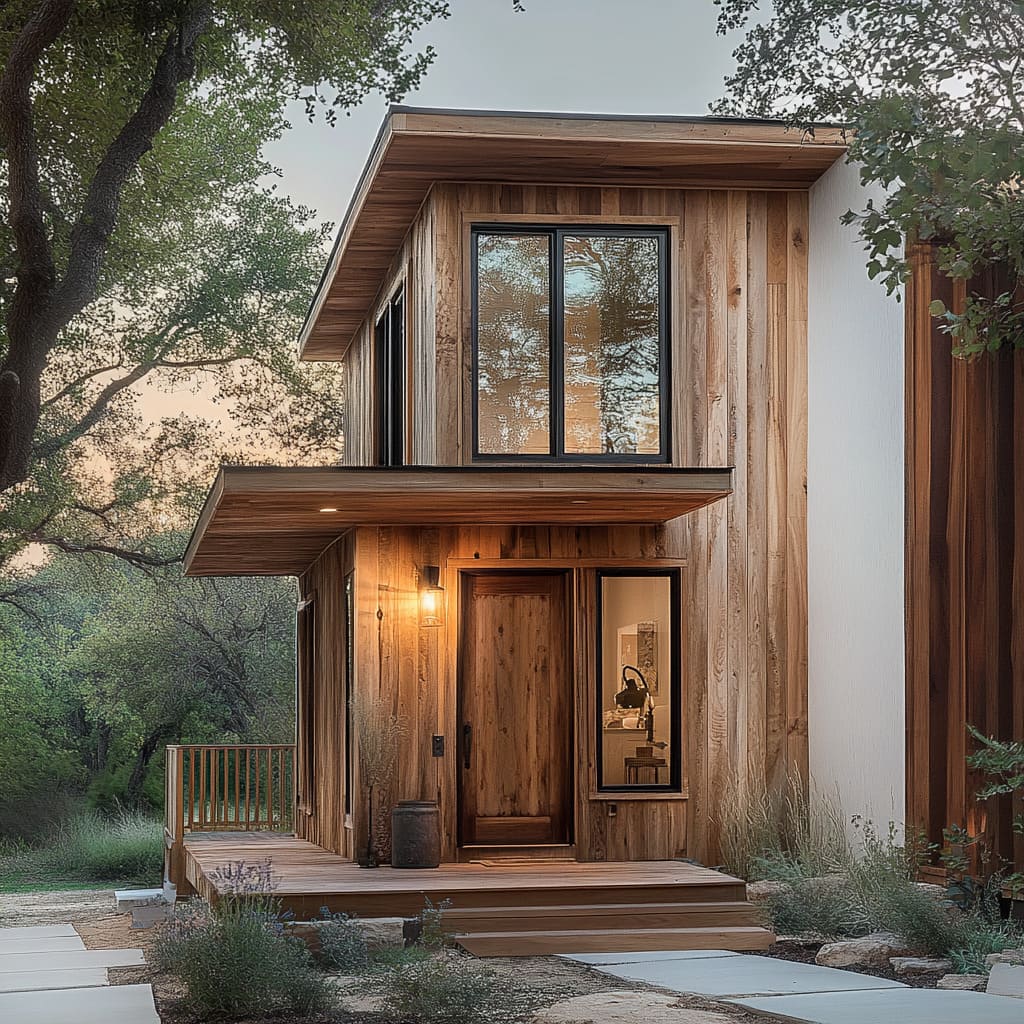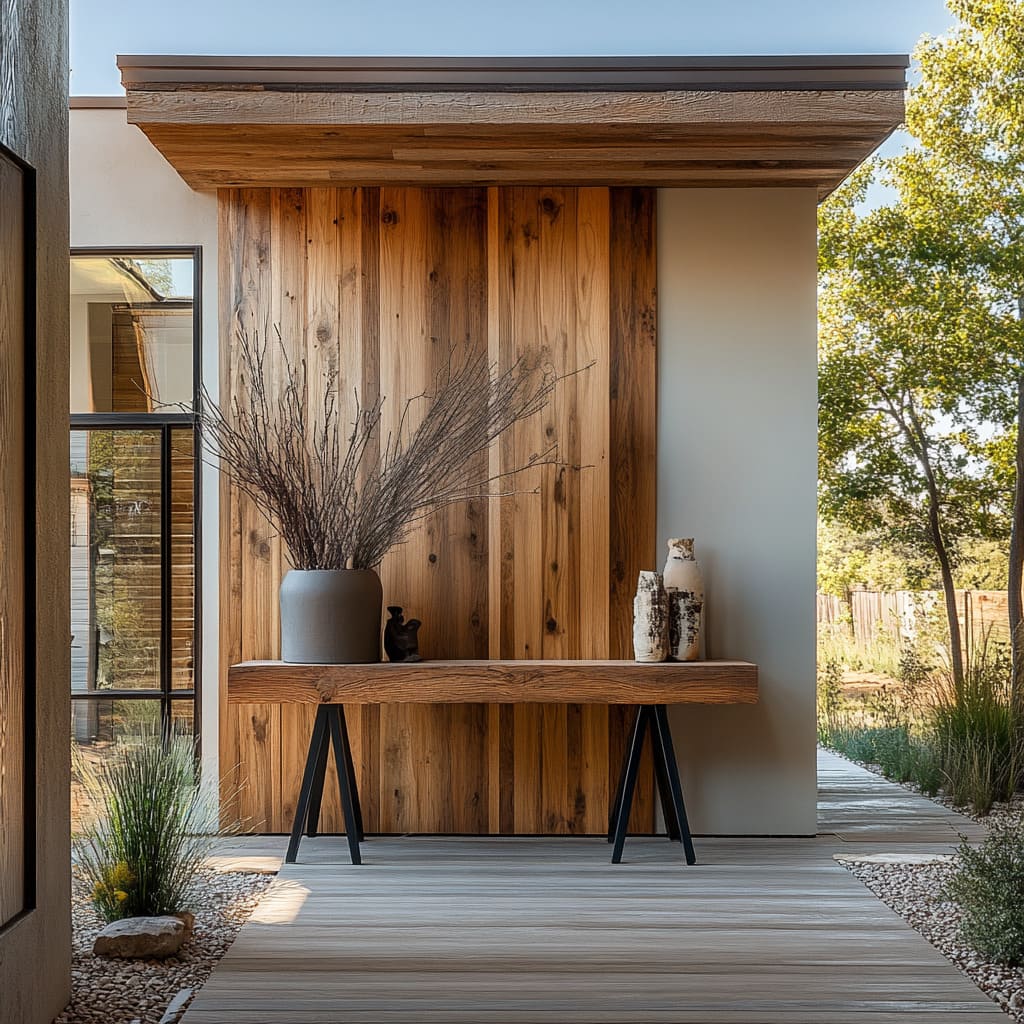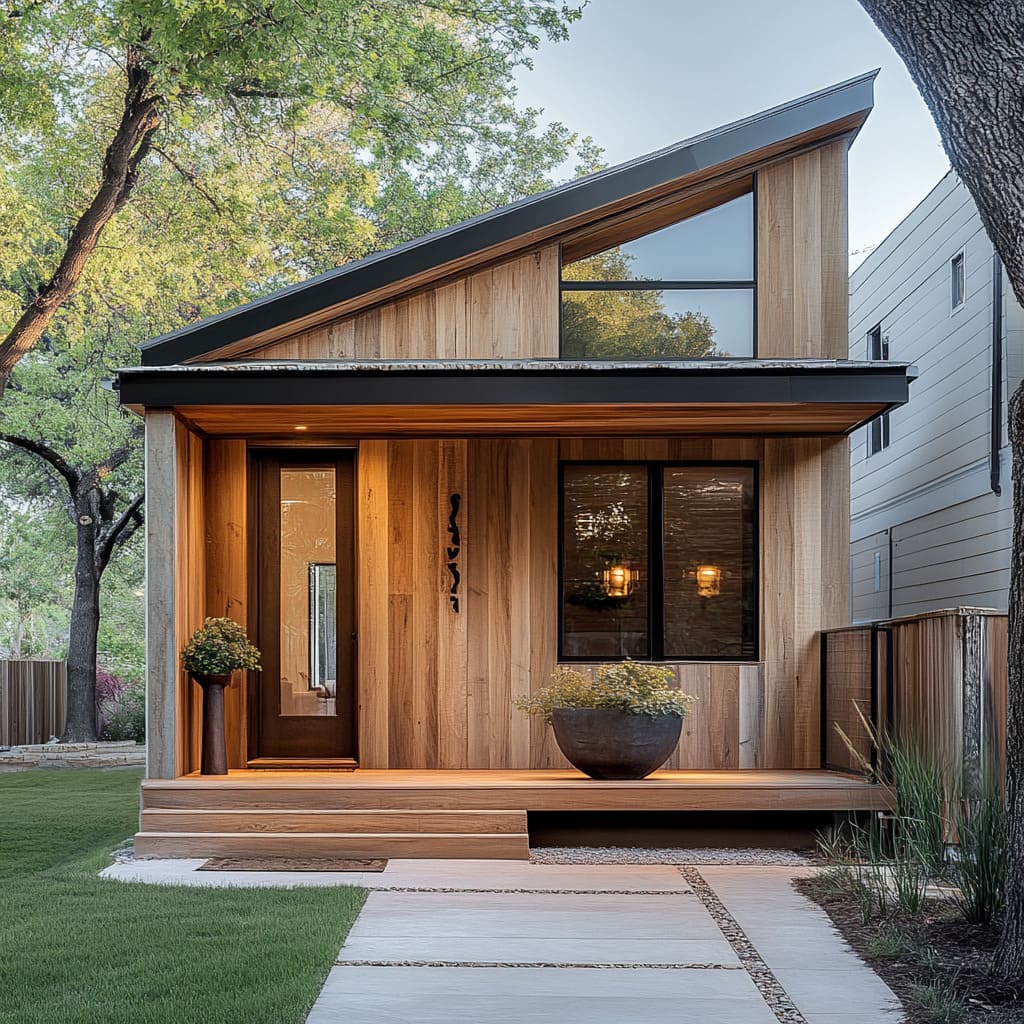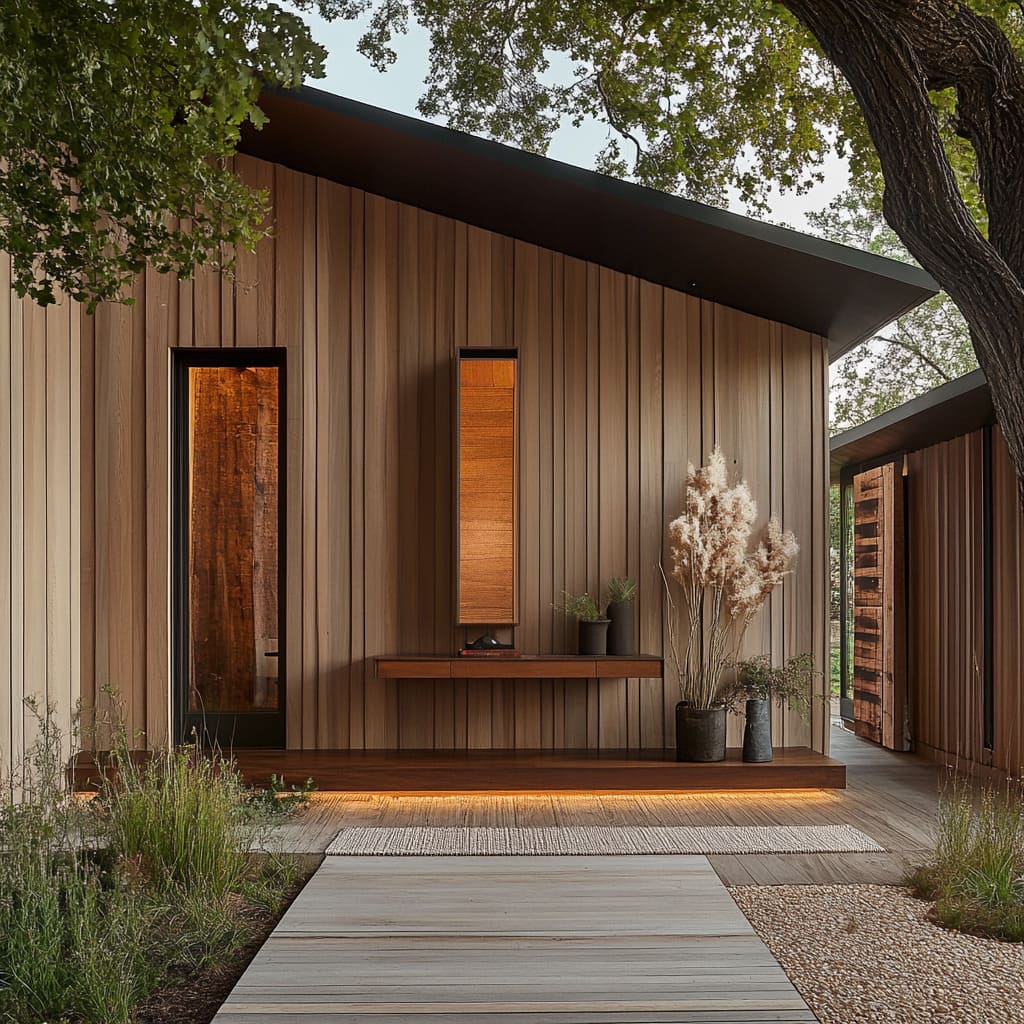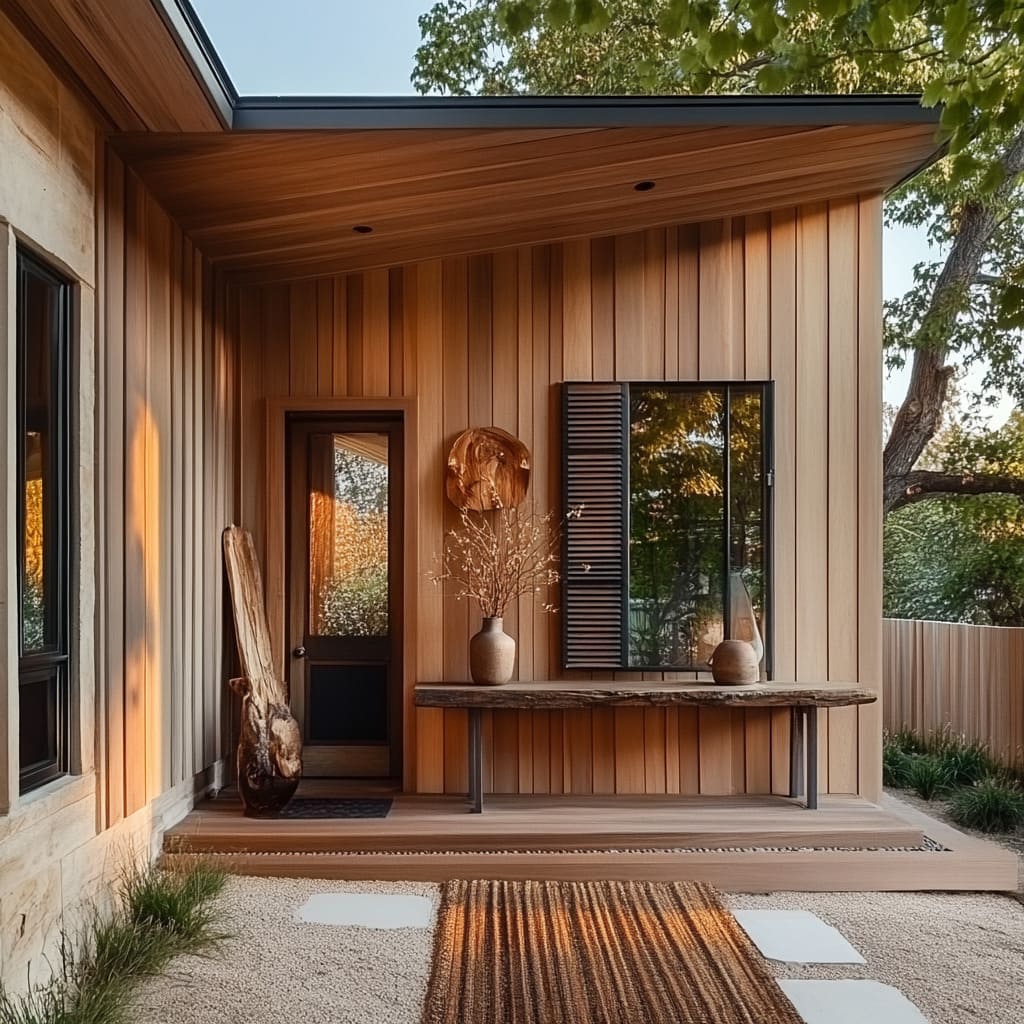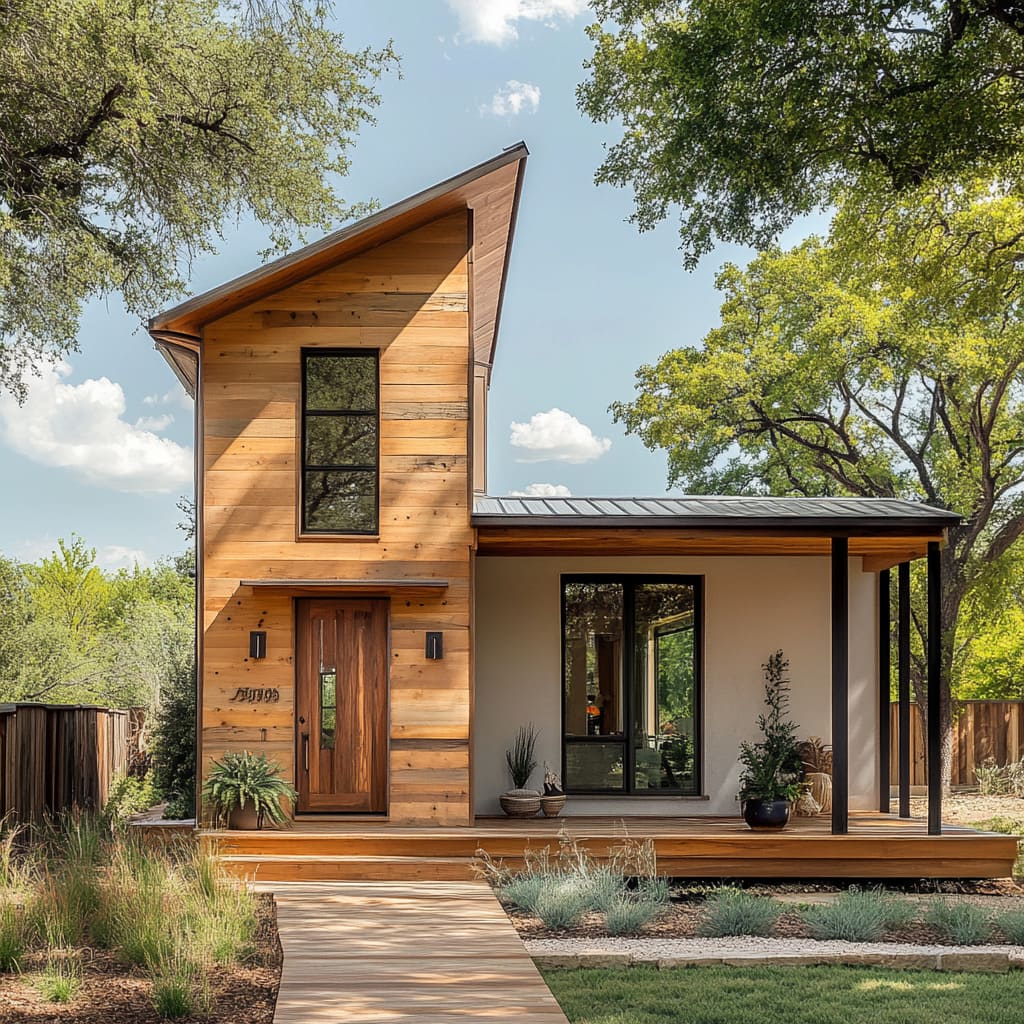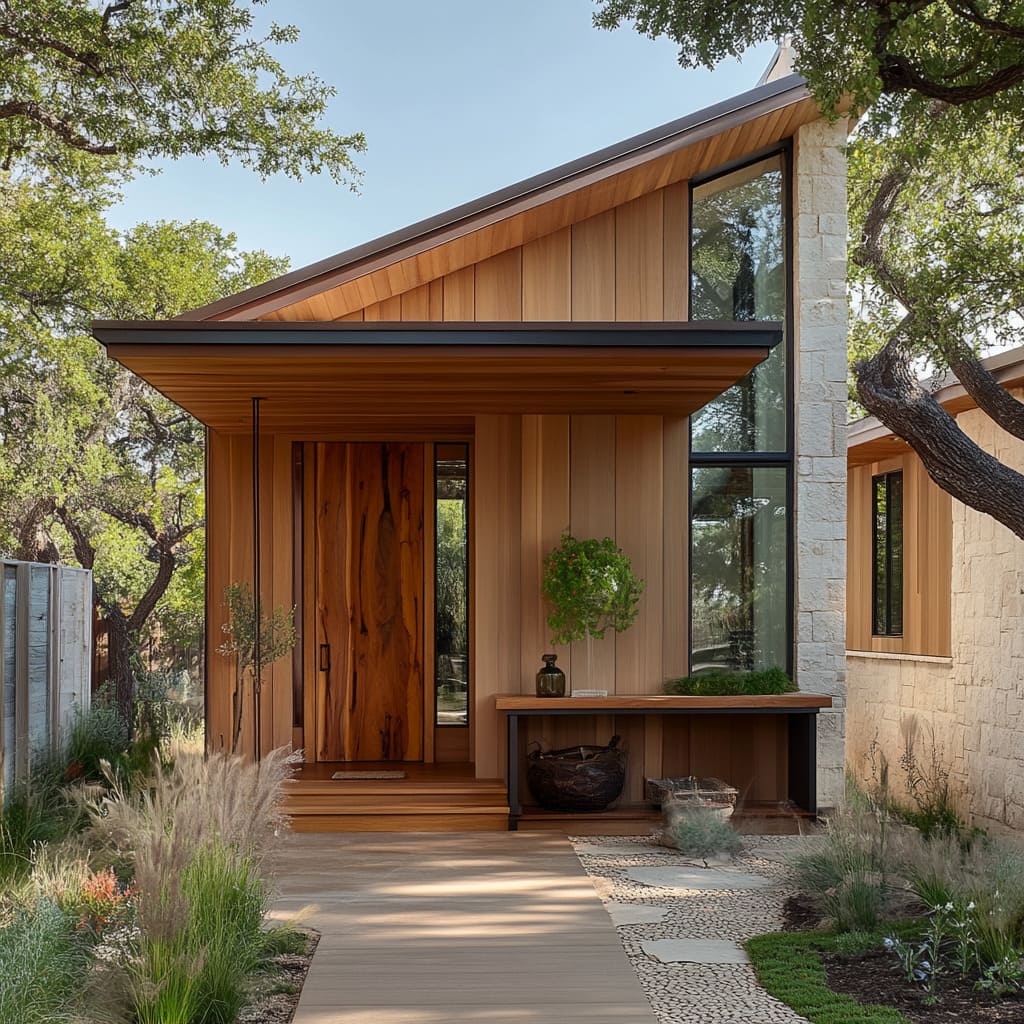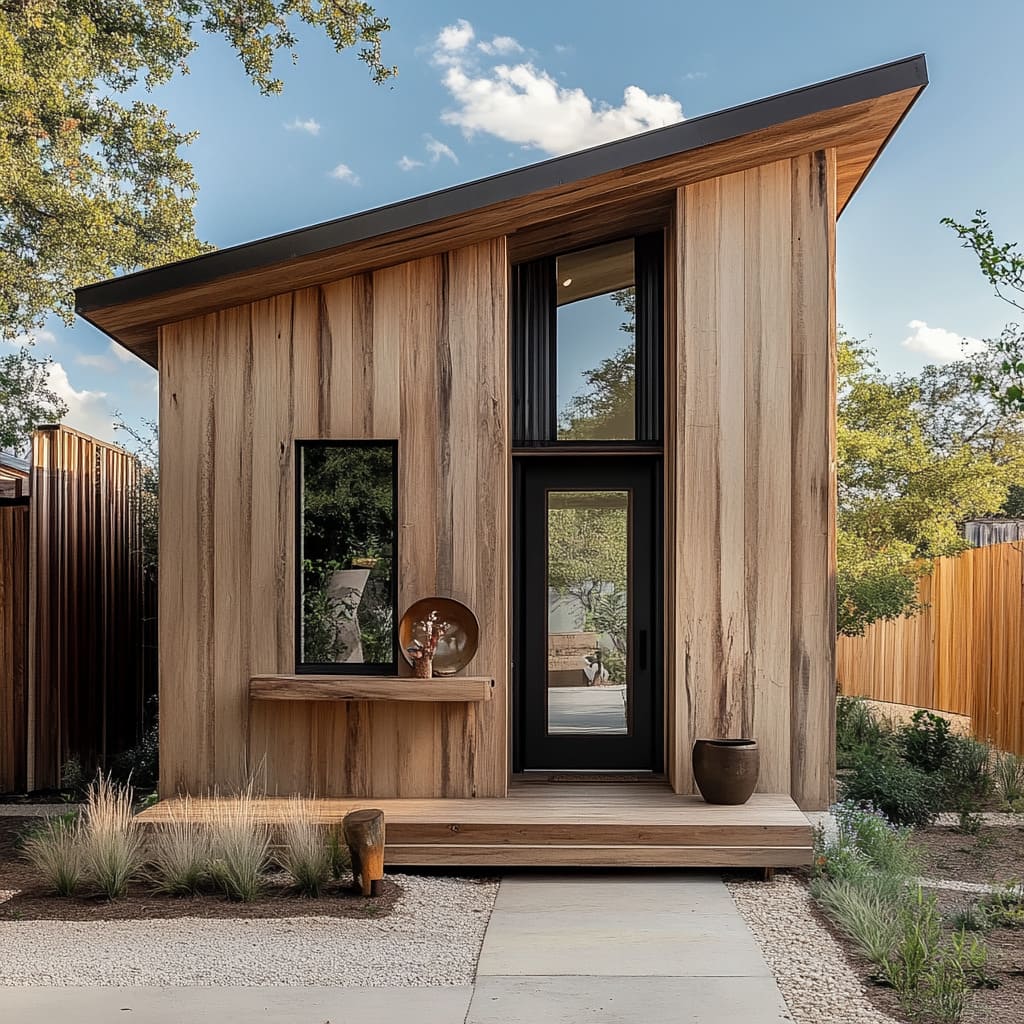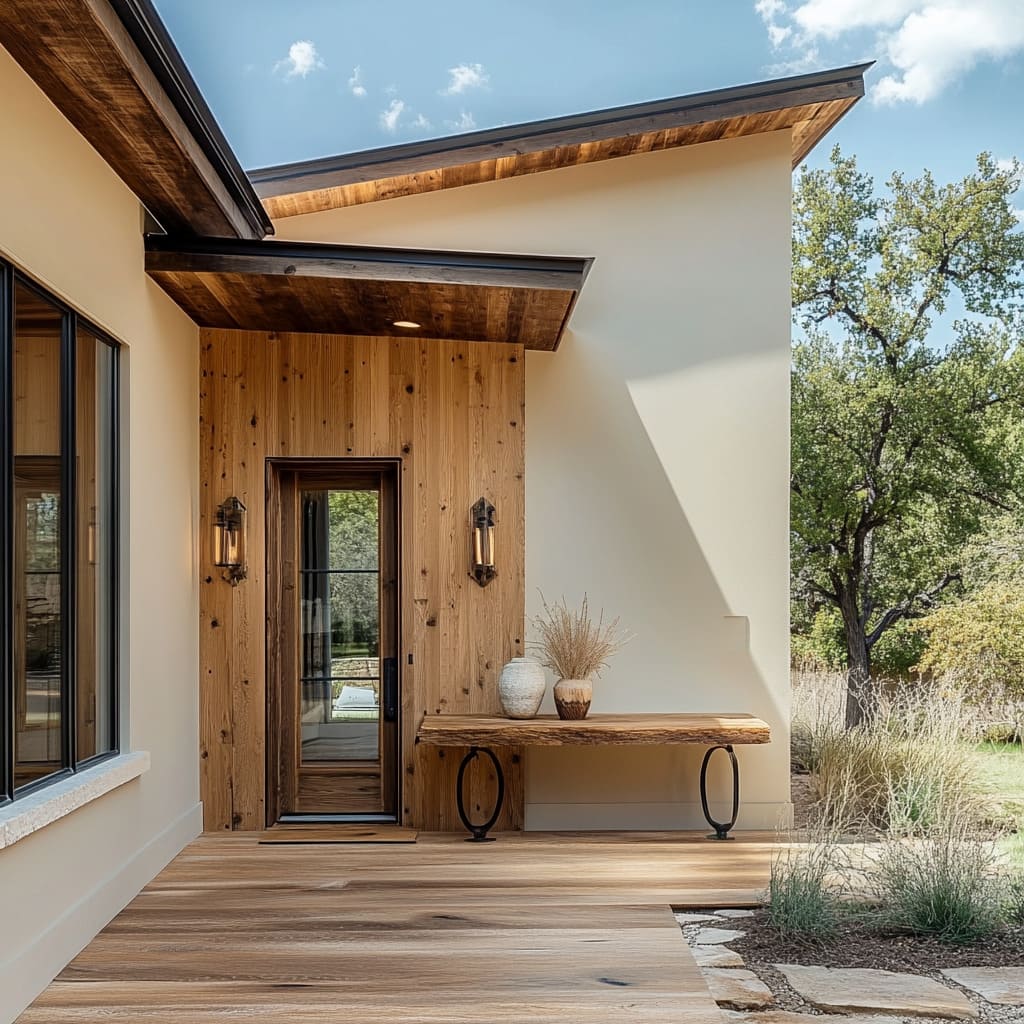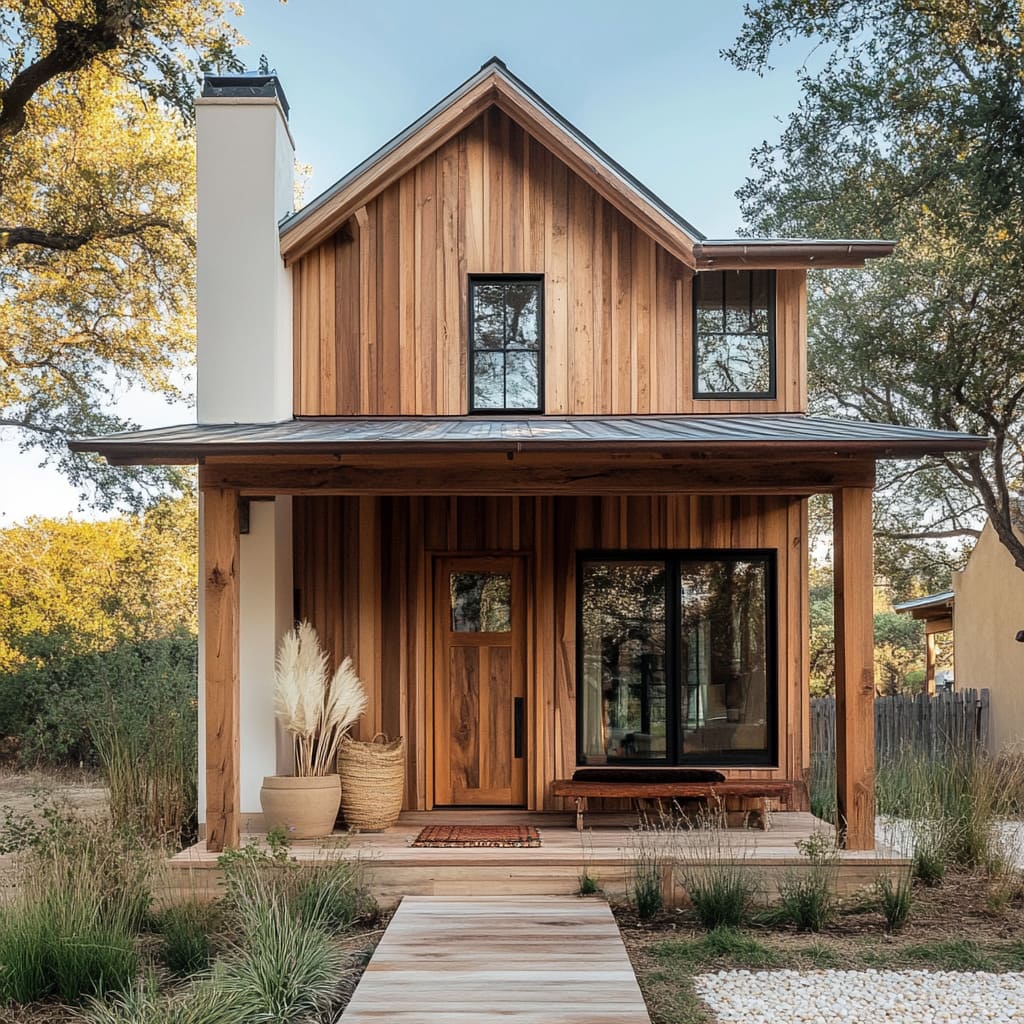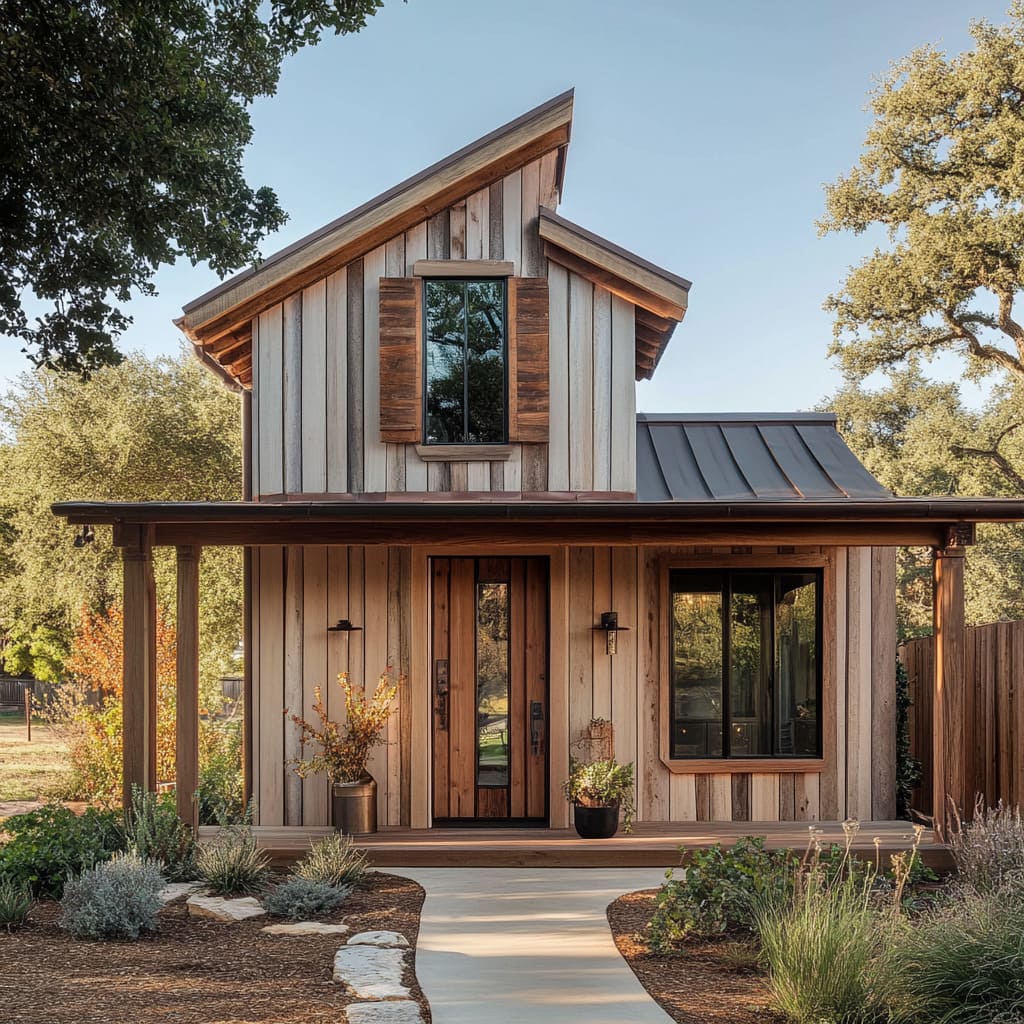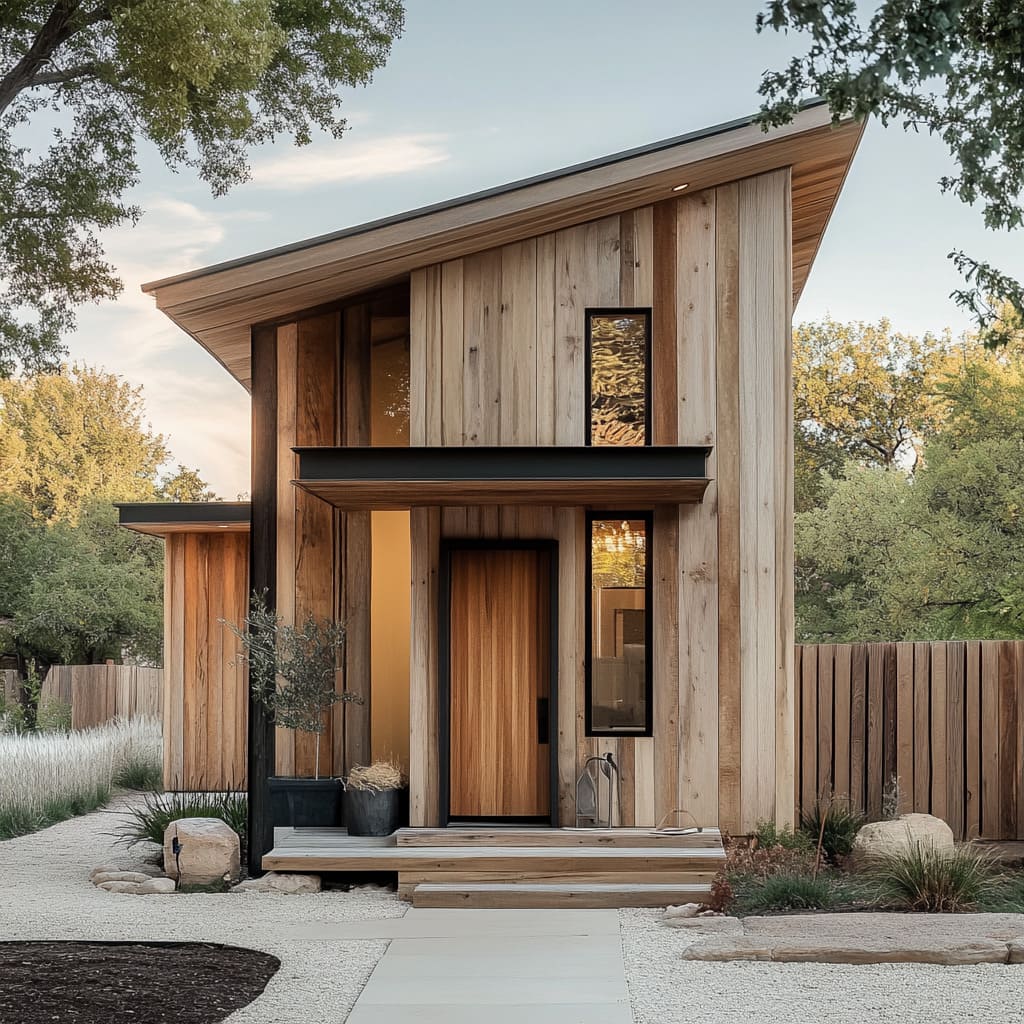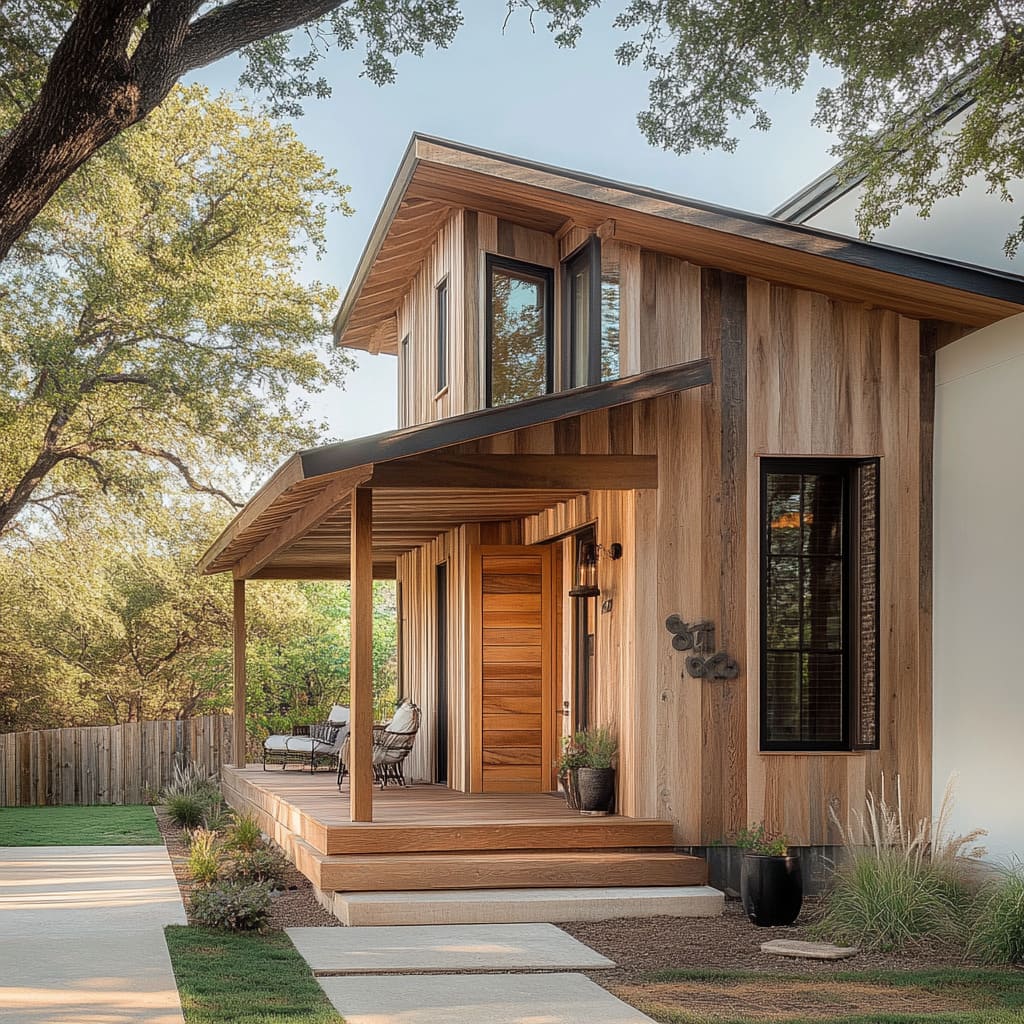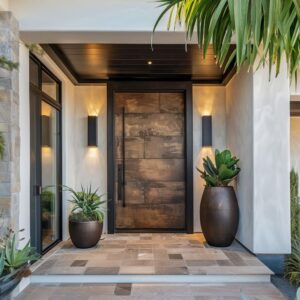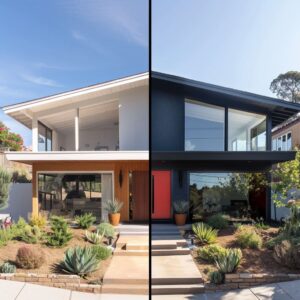Modern cabin homes represent a unique architectural style that marries the rustic charm of traditional cabins with the sleek, clean lines of contemporary design. These homes offer a fresh take on cabin living, moving beyond the dark, heavy wood interiors and small, cramped spaces often associated with older styles.
Instead, they embrace openness, natural light, and a profound connection to the outdoors. The fusion of minimalist lines with Scandinavian eco-design principles results in homes that are not only visually striking but also deeply in tune with their natural surroundings.
The concept of blending minimalist and Scandinavian design into modern cabin homes revolves around a few core principles: simplicity, functionality, and sustainability. Minimalist lines provide a sense of order and calm, while Scandinavian influences bring warmth and a connection to nature.
Together, they create spaces that feel both comfortable and sophisticated, making these homes ideal for those who seek a peaceful retreat that is still stylish and contemporary
This article explores the world of modern cabin designs, delving into the architectural elements, material choices, design inspirations, and sustainable features that define this unique style. It aims to provide a comprehensive understanding of how these homes blend traditional cabin aesthetics with modern sensibilities, offering a fresh perspective on what it means to live in a contemporary cabin home
Defining Modern Cabin Homes
To understand what makes a modern cabin home distinctive, it’s essential to first define what these homes are and how they differ from traditional cabins. Unlike their predecessors, modern cabin homes are characterized by an openness that breaks away from the dark, enclosed spaces of old.
They often feature large windows, open floor plans, and seamless transitions between indoor and outdoor living areas, fostering a strong connection with the surrounding environment. Modern cabin designs focus on clean, minimalist lines that simplify the structure’s appearance and highlight the beauty of natural materials.
This approach creates a serene, uncluttered space that emphasizes function without sacrificing style. The use of natural materials such as wood, stone, and metal is central to this style, celebrating the raw, organic beauty of these elements while also ensuring durability and sustainability
Traditional cabins were often small, single-room structures built for practicality rather than comfort. In contrast, modern small cottages and small contemporary cabins have reimagined the cabin concept, offering more comfort and versatility.
These homes still maintain a compact footprint but are designed with thoughtful layouts that maximize every square foot. This makes them ideal for eco-friendly living, reducing the environmental impact of construction and promoting a simpler, more sustainable lifestyle.
One of the defining characteristics of a modern cabin is its commitment to being an eco-friendly house. This means more than just using sustainable materials; it involves integrating design features that reduce energy consumption and environmental impact.
From passive solar heating and cooling to the use of recycled and reclaimed materials, modern cabins are designed with a deep respect for the environment. This approach not only minimizes the carbon footprint of the home but also creates a living space that is healthier and more in tune with nature
In summary, modern cabin homes are a reimagined take on the classic cabin, blending the best of rustic and contemporary design. They prioritize simplicity, functionality, and sustainability, using natural materials and thoughtful design to create homes that are both stylish and eco-friendly.
As we explore these elements further, we’ll see how the fusion of minimalist lines with Scandinavian eco-design principles has created a new standard for what it means to live in harmony with nature
Architectural Elements of Modern Cabin Homes
Modern cabin homes are a blend of simplicity, functionality, and natural integration. The architectural elements that define these homes emphasize both form and practicality, merging traditional cabin aesthetics with contemporary design principles.
In this section, we explore the essential architectural components that make modern cabin homes unique, focusing on their structure, roof designs, and exterior layout
Form and Structure
The form and structure of modern cabin homes are central to their design philosophy. These homes typically come in a variety of forms, including one-story, two-story, and asymmetrical designs, each offering a distinct aesthetic and functional advantage.
One-story cabins are often chosen for their simplicity and ease of access. This design minimizes stairs and creates a straightforward flow between spaces, making it ideal for those who prefer a layout that connects directly with the surrounding landscape.
The single-level form also allows for expansive windows and sliding glass doors, maximizing natural light and enhancing the connection between the interior and exterior
Two-story cabins, on the other hand, provide more living space within a smaller footprint. This design is especially beneficial in areas where land is limited or where preserving natural surroundings is a priority.
By building upward, these homes can accommodate more functional areas, such as additional bedrooms or a home office, without expanding their footprint. The two-story structure also offers a dramatic visual impact, often featuring a mix of open and enclosed spaces that create a dynamic and inviting environment.
Asymmetrical forms are a hallmark of contemporary cabin design, breaking away from the conventional boxy shapes associated with traditional cabins. These designs introduce unique angles and lines that add visual interest and modern appeal.
The asymmetry can be functional, too, such as when it is used to optimize natural light or to create sheltered outdoor areas that protect against wind or provide shade
Shed roof designs are another defining feature of many modern cabin houses. The shed roof, with its single sloping plane, is both a practical and aesthetic choice.
It facilitates efficient water drainage and snow shedding, which is crucial in regions with heavy rainfall or snowfall. Moreover, the slope of the roof allows for taller windows on one side of the structure, maximizing sunlight penetration and providing stunning views of the natural surroundings.
This design not only enhances the home’s aesthetic but also improves energy efficiency by allowing more natural light to enter during the day
The architectural form and structure of modern cabins are not just about looks; they are about creating a sustainable house design that responds to the environment and enhances the living experience. The thoughtful use of space, combined with a careful consideration of the home’s orientation and form, contributes to the overall efficiency and comfort of these residences
Roof Design
The roof is a critical element in the design of any cabin, and in modern cabin homes, it plays both an aesthetic and functional role. Two of the most common roof styles in these homes are the shed roof and the gable roof, each offering unique benefits.
The shed roof, with its single sloping plane, is a favorite in contemporary cabin design. Its clean, simple lines complement the minimalist aesthetic of modern cabins, while its functional benefits are significant.
The sloping design is ideal for areas with heavy rainfall or snow, as it allows water and snow to slide off easily, preventing accumulation and reducing the risk of leaks or structural damage. Additionally, the shed roof can be angled to capture maximum sunlight, making it perfect for homes designed with passive solar heating in mind
The gable roof is another popular choice, known for its classic triangular shape that adds a traditional touch to a modern design. The gable roof provides excellent ventilation and allows for additional loft or attic space, which can be used for storage or as an extra living area.
Its steep pitch also facilitates water drainage and snow shedding, much like the shed roof. In terms of aesthetics, the gable roof adds height and drama to the structure, making it a striking feature in any landscape.
Both roof styles contribute to the overall aesthetic appeal of modern cabin homes, blending functionality with a strong design statement. They play a crucial role in the home’s performance, particularly in terms of energy efficiency and durability, which are essential components of sustainable architecture
Exterior Layout and Spatial Planning
The exterior layout and spatial planning of modern cabin homes are carefully designed to create a seamless flow between the indoor and outdoor spaces. These homes typically feature compact and efficient layouts that maximize every square foot of space, making them ideal for both small and large plots of land.
The layout often emphasizes open-plan living areas that encourage interaction and provide flexibility in how the space is used. For example, a single large room may serve as both a living and dining area, with a kitchen tucked neatly to one side.
This kind of layout fosters a sense of openness and connectivity, which is a key element of the Scandinavian house design ethos
At the same time, these homes are designed to balance open and enclosed spaces. Private areas, such as bedrooms and bathrooms, are often positioned away from the main living areas to create a sense of retreat and privacy.
The careful zoning of spaces within the home ensures that there is a place for both social interaction and quiet solitude. Spatial planning in these homes is also about enhancing functionality and the connection to nature.
Large windows and doors are strategically placed to frame views of the landscape, drawing the eye outward and making the natural surroundings feel like an extension of the home. Patios, decks, and outdoor living areas are integral to the design, providing additional space for relaxation and entertaining while fostering a closer relationship with the outdoors
Material Choices and Their Aesthetic Impacts
The choice of materials in modern cabin homes plays a crucial role in defining their aesthetic and functional qualities. The use of natural materials, combined with contemporary finishes, creates a balanced look that is both timeless and modern.
Natural Wood Cladding
Natural wood cladding is a signature feature of modern cabins, offering both visual appeal and practical benefits. Woods like cedar and other durable hardwoods are commonly used for their resistance to rot and insects, as well as their ability to withstand harsh weather conditions.
The natural grain and texture of wood add warmth and character to the exterior, creating a welcoming appearance that complements the natural surroundings
The use of vertical wood panels is particularly popular, as it adds height and visual interest to the facade. Varying the width of the panels can create a dynamic pattern that draws the eye and adds depth to the design.
Over time, the wood develops a natural patina that enhances its beauty and helps integrate the home further into its setting. This aging process is a testament to the sustainability of wood as a material, showing how it can adapt and blend with its environment over time
Contrasting Materials
In addition to wood, modern cabin homes often incorporate contrasting materials to add visual depth and modern appeal. Smooth stucco or light-colored finishes are frequently used alongside warm wood tones to create a balanced and sophisticated look.
This contrast highlights the natural beauty of the wood while adding a contemporary touch that aligns with modern design principles. The use of contrasting materials is not just about aesthetics; it also serves a practical purpose.
Light-colored finishes can help reflect sunlight, keeping the home cooler in warm climates, while stucco provides a durable and low-maintenance exterior that complements the natural wood. This combination of materials adds texture and interest to the facade, making the home stand out while still feeling at home in its natural surroundings
Metal Accents
Metal accents are another key feature in the material palette of modern cabin homes. Dark metal framing for windows and doors provides a sleek, contemporary touch that contrasts beautifully with the natural wood and light stucco.
These metal elements add a layer of sophistication to the design, enhancing the overall aesthetic while also offering practical benefits
Metal is chosen for its durability and low maintenance, making it an ideal choice for homes that aim to balance style with practicality. The dark finish of the metal frames also helps to ground the design, creating a cohesive look that ties together the different elements of the facade.
Moreover, metal is a highly sustainable material, aligning with the principles of sustainable house design by offering longevity and recyclability. By combining natural wood, contrasting finishes, and metal accents, modern cabin homes achieve a unique aesthetic that is both warm and contemporary.
These material choices not only enhance the visual appeal of the home but also contribute to its durability, sustainability, and overall performance
Maximizing Natural Light: Window Design and Placement
Modern cabin homes are designed to connect occupants with their natural surroundings, and one of the most effective ways to achieve this is through the strategic use of windows. The design and placement of windows are critical in capturing natural light, enhancing energy efficiency, and fostering a seamless transition between indoor and outdoor spaces.
This section explores the importance of window design in modern cottages and how these elements contribute to the overall aesthetic and functionality of the home
Importance of Large Windows
Large windows are a hallmark of contemporary cabins, serving both aesthetic and practical purposes. The strategic placement of these expansive windows allows for maximum natural light to flood the interior spaces, creating a bright and inviting atmosphere.
This abundance of natural light reduces the need for artificial lighting during the day, which can significantly cut down on energy consumption and costs
In addition to their functional benefits, large windows are crucial in blurring the boundaries between indoor and outdoor spaces. By framing views of the surrounding landscape, these windows create a visual connection with nature, making the outdoors feel like an extension of the home.
This is especially important in a Scandinavian style house, where the emphasis is on minimalism, natural light, and a strong connection to the environment. The expansive glass surfaces allow residents to enjoy the changing seasons and natural beauty from the comfort of their living spaces, enhancing the overall living experience
Large windows also play a significant role in contemporary design by emphasizing clean lines and simple forms. They complement the minimalist aesthetic of modern cabin ideas, where less is more, and every design element serves a purpose.
The transparency offered by these windows adds to the sense of openness and space, making even smaller cabins feel larger and more expansive
High-Performance Glazing
While large windows provide aesthetic and lighting benefits, they must also be functional in terms of energy efficiency. This is where high-performance glazing comes into play.
High-performance windows are designed with multiple panes of glass, low-emissivity (low-E) coatings, and gas fills that significantly improve their insulation properties. These windows help maintain a comfortable indoor temperature by reducing heat loss in the winter and heat gain in the summer.
The use of high-performance glazing in modern cabin homes is essential for balancing natural light with temperature control. In a mid-century modern cabin, for example, the large expanses of glass might lead to overheating in the summer or significant heat loss in the winter if not properly insulated.
High-performance windows address these issues by providing excellent thermal insulation without sacrificing the benefits of natural light and views. This technology allows homeowners to enjoy the aesthetic benefits of large windows while minimizing their impact on energy consumption and comfort
Moreover, high-performance glazing contributes to a home’s sustainability by enhancing its energy efficiency. In the context of modern cabin homes, which often prioritize eco-friendly design, the use of such windows aligns with broader goals of sustainability and environmental stewardship
Integration with Architectural Style
Window design in modern cabins is not only about functionality but also about maintaining a cohesive architectural style. The vertical orientation of windows, for example, is often chosen to echo the vertical lines of wood siding commonly found in modern cabin exteriors.
This design choice creates a visual rhythm that enhances the overall aesthetic of the home, making it appear taller and more slender. In a contemporary cabin, windows are often used as architectural features that contribute to the home’s overall design language.
The placement and size of the windows are carefully considered to ensure that they align with other design elements, such as rooflines, siding, and door placement. This integration creates a harmonious and balanced appearance, enhancing both the visual appeal and the structural integrity of the home
Entryway and Porch Design
The entryway and porch are significant elements in modern cabin homes, serving as both functional spaces and welcoming transitions from the outdoors to the interior. These areas are carefully designed to enhance the home’s aesthetic appeal while also providing practical benefits.
Functional and Aesthetic Elements
The design of entryways in modern cabins often includes covered porches that serve as transitional spaces between the exterior environment and the interior living areas. These porches provide shelter from the elements, allowing residents and guests to pause before entering the home.
Covered porches are particularly important in regions with harsh weather, as they protect against rain, snow, and wind. In terms of materials, natural elements such as wood and stone are commonly used to create welcoming entrances.
The use of wood, for example, adds warmth and texture to the entryway, making it feel more inviting. Stone, on the other hand, provides a sense of solidity and permanence, enhancing the overall stability of the structure.
Together, these materials create a balanced and harmonious entryway that reflects the natural surroundings and complements the home’s design
The entryway is more than just a functional space; it is also an opportunity to express the home’s style and character. In a Scandinavian style house, for example, the entryway might feature simple, clean lines and minimalist decor, reflecting the broader design principles of the home.
The use of natural materials and subtle design elements creates a calming and welcoming atmosphere, setting the tone for the rest of the house
Outdoor Furnishings
Outdoor furnishings play a crucial role in defining the character and functionality of porches and entryways in modern cabins. Rustic elements such as wooden benches, rocking chairs, and natural decor are commonly incorporated to enhance the outdoor living experience.
These furnishings not only provide seating and comfort but also contribute to the home’s overall aesthetic. The emphasis on simplicity and functionality in outdoor furniture choices aligns with the minimalist principles of modern cabin design.
Furnishings are often chosen for their durability and practicality, ensuring they can withstand the elements while providing a comfortable and inviting space for relaxation and socializing. The use of natural materials such as wood and stone further reinforces the connection to the environment, creating a seamless transition from the outside to the inside
Landscaping: Extending the Design Philosophy Outdoors
Landscaping is an integral part of modern cabin design, extending the home’s architectural principles into the surrounding environment. The approach to landscaping in these homes is characterized by sustainability, simplicity, and a strong connection to nature
Sustainable Landscaping Practices
Sustainable landscaping practices are essential in modern cabin homes, where the goal is to create a harmonious relationship between the built environment and the natural surroundings. This often involves the use of native plants, grasses, and shrubs that require minimal maintenance and are well-suited to the local climate.
These plants are chosen not only for their aesthetic qualities but also for their ability to thrive without the need for excessive watering or chemical fertilizers. The use of drought-resistant and low-water-use plants is particularly important in regions where water conservation is a concern.
By selecting plants that are adapted to the local environment, homeowners can reduce their water usage and minimize the impact on natural resources. This approach to landscaping aligns with the principles of sustainable house design, creating a beautiful and functional outdoor space that respects the natural ecosystem
Hardscape Elements
Hardscape elements, such as gravel pathways and permeable surfaces, are another important aspect of landscaping in modern cabins. These elements promote water conservation by allowing rainwater to infiltrate the soil rather than running off into storm drains.
This not only helps to recharge local groundwater supplies but also reduces the risk of erosion and water pollution. The integration of hardscape and softscape elements is crucial in creating a balanced and cohesive landscape design.
By blending built and natural environments, modern cabin homes achieve a harmonious relationship with their surroundings. The use of natural materials, such as stone and wood, further enhances this connection, creating a landscape that feels both intentional and organic
Strategic Planting
Strategic planting is a key component of landscape design in modern cabins, where the goal is to create a sense of seclusion and tranquility. Trees and larger plants are often placed to provide shade, privacy, and aesthetic enhancement, creating a natural barrier that protects the home from the elements and prying eyes.
The placement of trees and shrubs is carefully considered to ensure they provide maximum benefit without obstructing views or blocking natural light. In a modern cabin house, for example, trees might be strategically planted to frame views of the surrounding landscape, creating a sense of depth and perspective.
This thoughtful approach to planting enhances the overall aesthetic of the home while also contributing to its functionality and comfort. By extending the design philosophy of the home into the landscape, modern cabins achieve a seamless integration with their natural surroundings.
This approach creates a living environment that feels connected, balanced, and in harmony with nature
Design Inspirations and Aesthetic Principles
Modern cabin homes draw inspiration from a variety of design philosophies that emphasize simplicity, natural materials, and a connection to the environment. By combining Scandinavian, rustic, minimalist, and modern design elements, these homes achieve a balance that is both aesthetically pleasing and highly functional.
In this section, we explore the core design inspirations and aesthetic principles that define the character of modern cabins
Scandinavian Influence
The influence of Scandinavian design is deeply rooted in the principles of simplicity, natural materials, and functionality. A modern Scandinavian house is typically characterized by its clean lines, uncluttered spaces, and a palette that emphasizes natural light and neutral tones.
This style is all about creating cozy, inviting spaces that are both functional and beautiful. In a Scandi style house, natural materials like wood and stone are used extensively, not just for their aesthetic appeal but also for their ability to bring warmth and texture into the home.
The emphasis on natural materials creates a strong connection to the outdoors, a key element of Scandinavian design. Interiors are often designed to be flexible and functional, with multipurpose furniture and open-plan layouts that maximize space and light
Scandinavian design also focuses on creating a warm and welcoming atmosphere. This is achieved through the use of soft textures, warm wood tones, and a harmonious color palette that reflects the natural landscape.
By bringing elements of the outside world into the home, these spaces feel integrated with their surroundings, making them ideal for modern cabin homes that seek to blur the lines between indoor and outdoor living
Rustic Elements
While modern cabin homes often incorporate clean, contemporary lines, they also draw heavily from rustic design traditions. A modern rustic cabin combines the sleek, minimalist approach of contemporary architecture with the raw, natural appeal of traditional cabins.
This blending of styles creates a unique aesthetic that is both modern and timeless. The use of exposed wood, whether in the form of beams, cladding, or flooring, is a hallmark of rustic design.
The natural grain and texture of the wood are left visible, celebrating the material’s inherent beauty and reinforcing a sense of connection to nature. Handcrafted details, such as custom-made wooden furniture or artisanal metalwork, add a layer of authenticity and character to these homes.
Balancing modern lines with traditional, rustic charm requires a thoughtful approach to design. It’s about finding harmony between the old and the new, using materials and techniques that honor traditional craftsmanship while embracing contemporary aesthetics.
This approach allows for a dynamic interplay between the refined and the rugged, creating spaces that feel both sophisticated and grounded
Minimalist Approach
Minimalism plays a significant role in the design of modern cabin homes, where the focus is on clean lines, uncluttered spaces, and a restrained use of decor. The minimalist approach is not just about removing excess; it’s about highlighting what remains.
By stripping away the unnecessary, the beauty of natural materials and the clarity of the architectural form are brought to the forefront
In minimalist cabin design, every element has a purpose. Furniture is carefully chosen not just for its aesthetic appeal but also for its functionality.
Storage solutions are integrated seamlessly into the design, maintaining a clean and orderly environment. This focus on simplicity and functionality makes minimalist cabins highly livable and comfortable, without sacrificing style.
The minimalist approach also complements the use of natural materials, such as wood, stone, and metal. By keeping the color palette neutral and the decor minimal, these materials can shine, adding warmth and texture to the space.
This restraint in design allows for a more profound appreciation of the natural beauty surrounding the home, reinforcing the connection to the environment
Modern Design Touches
Modern design elements are seamlessly integrated into modern cabin homes, adding a layer of sophistication and contemporary appeal. The use of contrasting materials, such as wood and metal or stone and glass, creates a visually dynamic facade that plays with light and shadow.
This contrast enhances the overall aesthetic, making the home feel both modern and timeless. Geometric shapes and clean lines are also central to modern design.
These elements are used to create a sense of order and balance, whether it’s through the layout of the rooms or the design of the exterior. The dynamic interplay of light and shadow on the facade adds depth and interest, making the home a striking feature in its natural setting.
The incorporation of modern design touches does not detract from the cabin’s rustic roots; instead, it enhances them, creating a dialogue between the past and the present. This blending of styles is what makes modern cabin homes so unique, offering a fresh take on traditional cabin living that is both stylish and comfortable
Sustainability and Eco-Friendly Features
Sustainability is a core principle in the design of modern cabin homes. These homes are not just about looking good; they are about doing good for the environment.
By incorporating sustainable practices into every aspect of their design, from the materials used to the way they interact with their surroundings, modern cabins are a model for environmentally friendly houses.
Sustainable Material Choices
The choice of materials is one of the most critical factors in creating sustainable homes.
Modern cabins often utilize locally sourced or reclaimed wood, which reduces the environmental impact associated with transportation and deforestation. Using reclaimed materials also adds character to the home, with each piece telling its own story.
Other eco-friendly house designs might incorporate materials like stone, bamboo, or recycled metal, all chosen for their low environmental footprint and durability
Sustainable construction practices go beyond just material choices. They also involve techniques that minimize waste and reduce the carbon footprint of the building process.
This might include using prefabricated components that can be assembled on-site, reducing construction time and minimizing disruption to the local ecosystem. By focusing on sustainable practices, these homes offer a more responsible way to build and live
Energy Efficiency
Energy efficiency is another key component of sustainable home design. Modern cabins often feature large windows to maximize natural light, reducing the need for artificial lighting during the day.
These windows are typically high-performance, double or triple-glazed to provide excellent insulation, helping to keep the home warm in the winter and cool in the summer
In addition to natural lighting, modern cabins are often designed with the potential for solar integration in mind. Solar panels can be seamlessly integrated into the roof design, providing a renewable source of energy that reduces reliance on fossil fuels.
Combined with energy-efficient heating and cooling systems, these features help to create homes that are not only beautiful but also energy-efficient and sustainable. By reducing reliance on artificial lighting and HVAC systems, modern cabins demonstrate that it is possible to live comfortably and stylishly while minimizing energy consumption.
This approach aligns with the broader goals of sustainable and environmentally friendly architecture, creating homes that are as good for the planet as they are for their occupants
Water Conservation and Management
Water conservation is an important consideration in the design of sustainable homes. Modern cabins often feature permeable surfaces, such as gravel pathways and patios, that allow rainwater to infiltrate the soil rather than running off into storm drains.
This approach not only helps to recharge local groundwater supplies but also reduces the risk of erosion and water pollution. Rainwater infiltration strategies are complemented by landscaping choices that promote sustainability.
Native plants, which are well-suited to the local climate, are used extensively in modern cabin landscapes. These plants require less water and maintenance than non-native species, making them an ideal choice for eco-friendly design.
By reducing the need for irrigation and chemical fertilizers, these landscaping choices help to create homes that are in harmony with their surroundings. In conclusion, modern cabin homes are a perfect blend of aesthetic appeal and environmental responsibility.
By drawing on a variety of design inspirations and principles, from Scandinavian simplicity to rustic charm and modern minimalism, these homes offer a unique approach to sustainable living. They demonstrate that it is possible to create beautiful, comfortable spaces that are also environmentally friendly, setting a new standard for what it means to live in harmony with nature
Interior Design Considerations
The interior design of modern cabin homes plays a crucial role in reflecting the principles that guide their architecture—simplicity, functionality, and a deep connection to nature. These interiors are carefully crafted to extend the themes of the exterior into the living spaces, ensuring a harmonious and seamless experience throughout the home.
By drawing on elements of Scandinavian and minimalist design, modern cabins create interiors that are both practical and inviting, embodying the essence of contemporary living while maintaining a rustic charm
Continuation of Exterior Themes
A defining characteristic of modern cabin interior design is the seamless continuation of exterior themes into the indoor spaces. This approach helps to maintain a cohesive aesthetic and reinforces the connection between the home and its natural surroundings.
One of the primary ways this is achieved is through the extensive use of natural materials, particularly wood, for floors, ceilings, and walls. Wood is not just a material choice but a design philosophy in modern cabin interiors.
The natural grain and texture of the wood bring warmth and character to the spaces, creating a cozy and inviting atmosphere that reflects the home’s rustic roots. Wooden beams, planked ceilings, and hardwood floors are common features, each element carefully chosen to enhance the overall aesthetic while providing durability and comfort.
This use of wood also ties back to the home’s exterior, creating a sense of continuity that blurs the lines between inside and out
Open-plan layouts are another key element of contemporary cabin interior design. These layouts maximize the flow of natural light and air, creating an airy and spacious environment that feels connected to the outdoors.
Large windows and sliding glass doors are strategically placed to frame views of the surrounding landscape, allowing light to flood the interior spaces and enhance the feeling of openness. This design choice not only makes the home feel larger and more expansive but also reduces the need for artificial lighting, aligning with sustainable living principles.
The integration of natural materials and open-plan layouts helps to create a modern cabin decor that is both functional and aesthetically pleasing. By focusing on these elements, modern cabins maintain a strong connection to their natural surroundings, fostering a sense of peace and tranquility within the home
Minimalist and Scandinavian Influences
Minimalism and Scandinavian design principles heavily influence modern cabin interiors, with a focus on simplicity, functionality, and comfort. These interiors are characterized by clean lines, uncluttered spaces, and a restrained use of decor, all of which contribute to a sense of calm and order.
This minimalist approach ensures that every element within the home serves a purpose, whether it’s providing comfort, storage, or enhancing the overall aesthetic. Functional furnishings are a hallmark of this style, with pieces that are both practical and beautiful.
Scandinavian-inspired furniture, often crafted from natural materials like wood and leather, adds warmth and texture to the space without overwhelming it. The emphasis is on quality over quantity, with carefully selected pieces that complement the home’s design and provide maximum utility.
This approach creates a modern cabin interior that feels both cozy and spacious, balancing the need for comfort with the desire for simplicity
Creating a cozy, ‘hygge’ environment is a central tenet of Scandinavian design, and this is reflected in the use of natural light and warm textures throughout the home. Soft furnishings, such as wool throws, sheepskin rugs, and linen cushions, add layers of comfort and invite relaxation.
The careful use of lighting, from large windows to strategically placed lamps, enhances the natural warmth of the materials and creates a welcoming ambiance. These elements combine to create a contemporary cabin interior design that is both stylish and functional, offering a perfect blend of modern aesthetics and traditional comfort
Conclusion
Modern cabin homes represent a unique fusion of rustic charm and contemporary style, combining the best of both worlds to create spaces that are both beautiful and functional. The defining features of these homes include a strong emphasis on natural materials, minimalist lines, and sustainable practices, all of which contribute to a living environment that is deeply connected to its surroundings
By drawing on Scandinavian design principles and incorporating elements of rustic and modern styles, modern cabin designs achieve a balance that is both aesthetically pleasing and practical. These homes are designed to provide comfort and functionality while maintaining a strong connection to nature, making them ideal for those who value both style and sustainability
Looking to the future, there is a growing trend towards more sustainable and eco-friendly living, and modern cabin homes are at the forefront of this movement. As people continue to seek out contemporary cabin design that reflects their values and lifestyle, we can expect to see further innovations in materials, construction methods, and design principles that enhance both the aesthetic and environmental qualities of these homes
The future of modern cabin homes lies in their ability to adapt and evolve, embracing new technologies and sustainable practices while staying true to their core principles. As these homes continue to evolve, they will remain a testament to the power of thoughtful design, offering a blueprint for living that is both stylish and environmentally conscious


